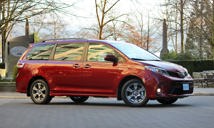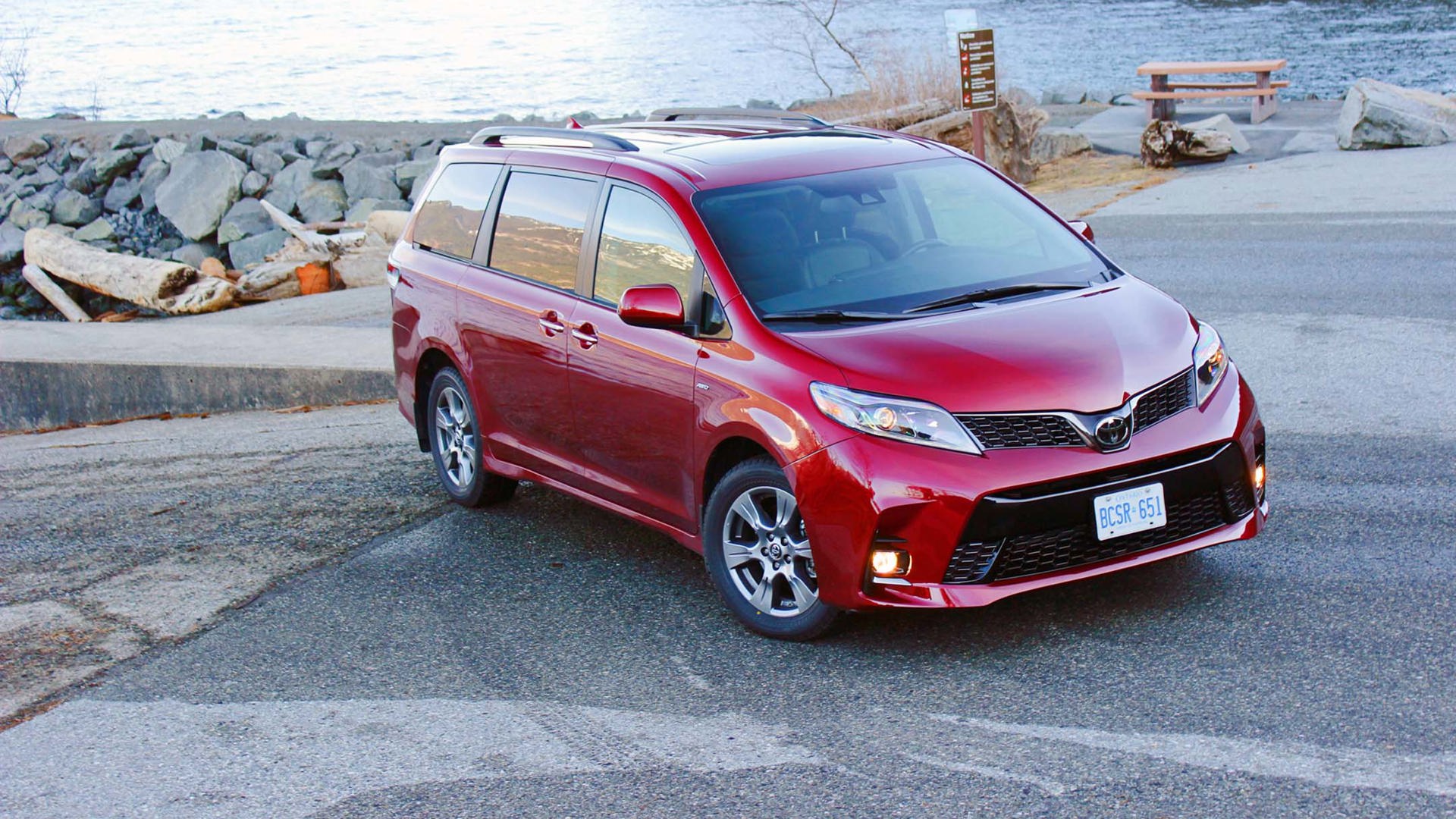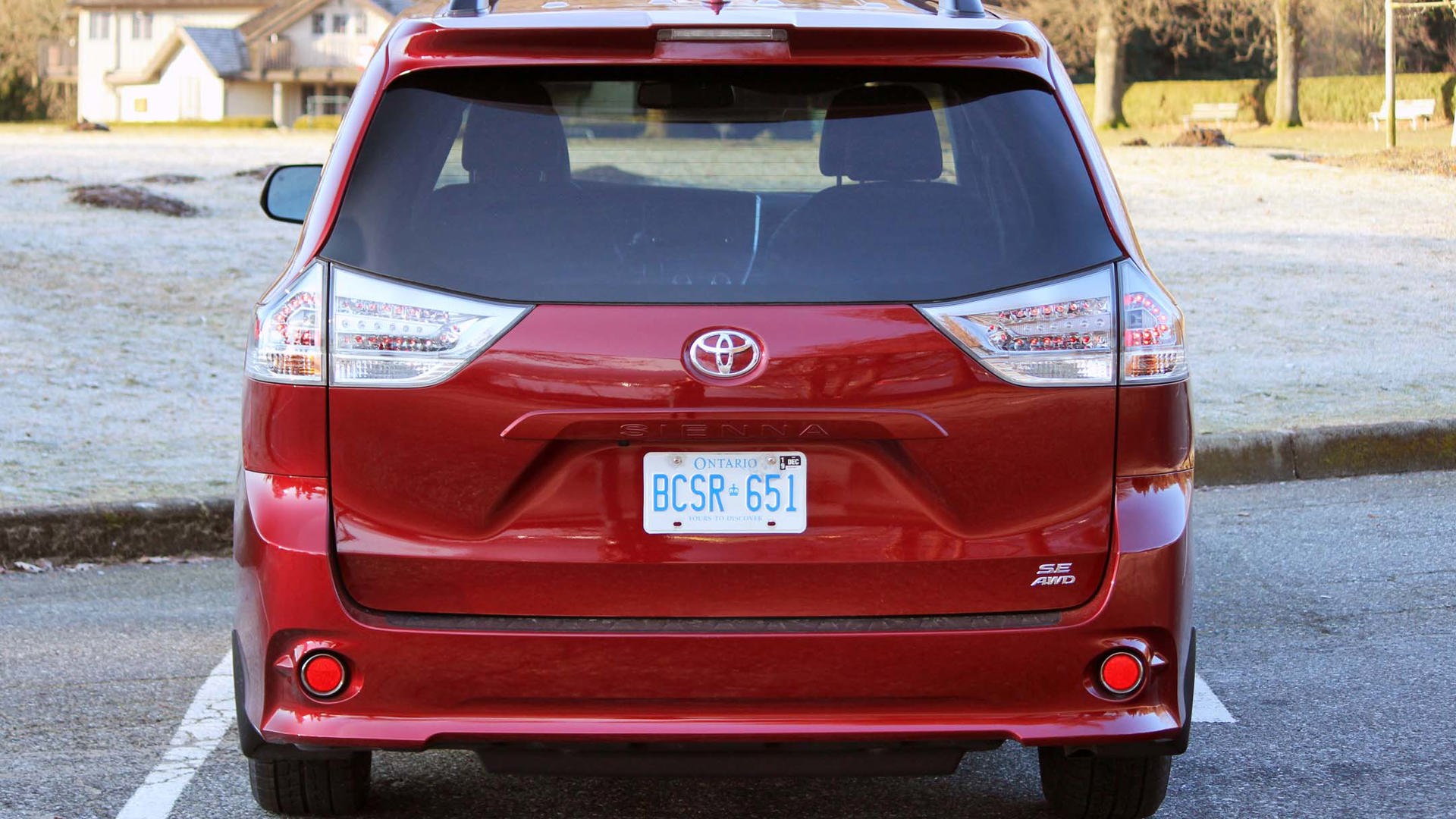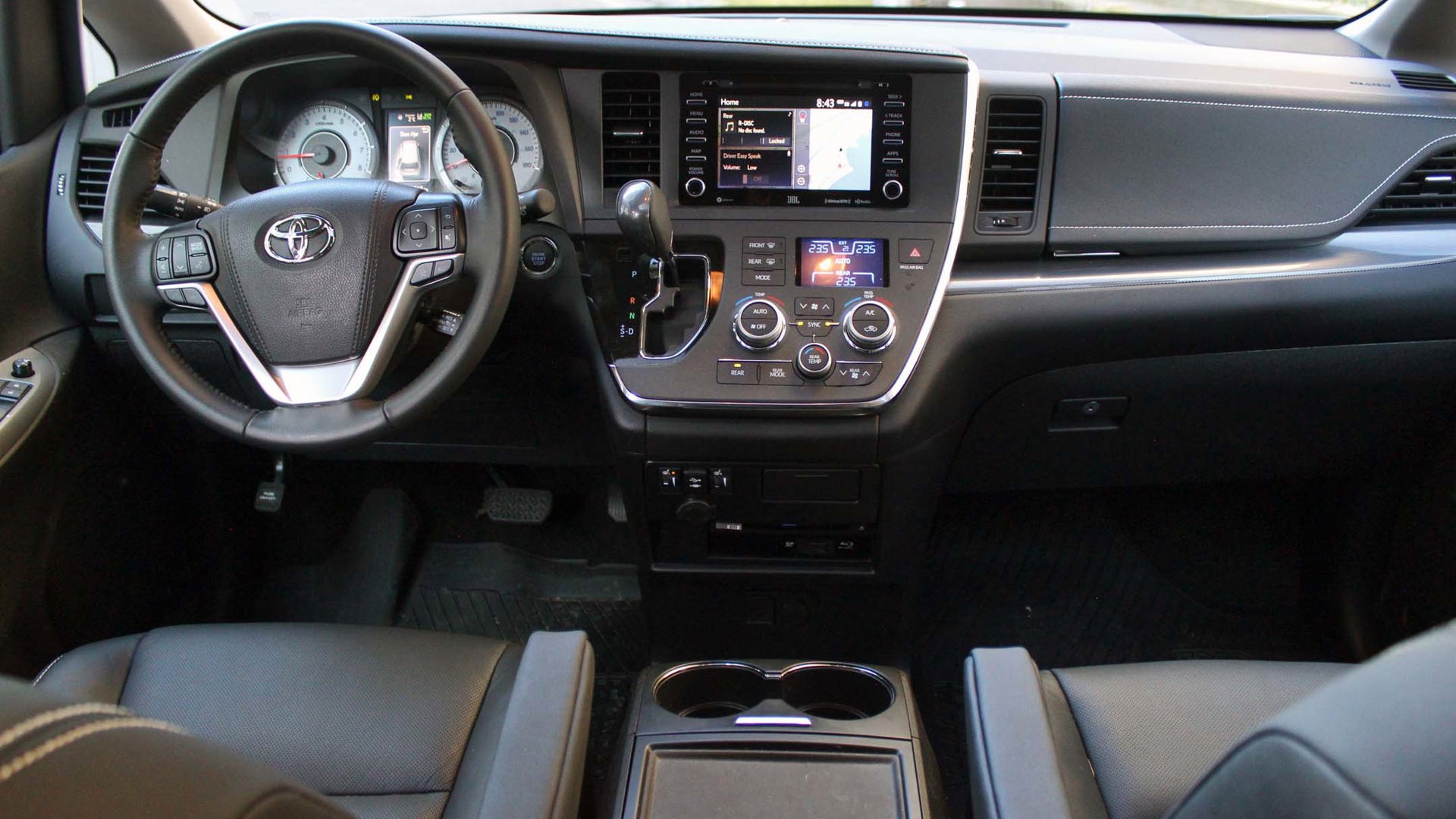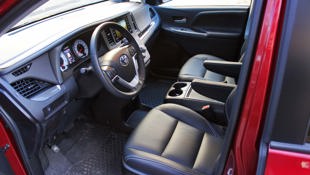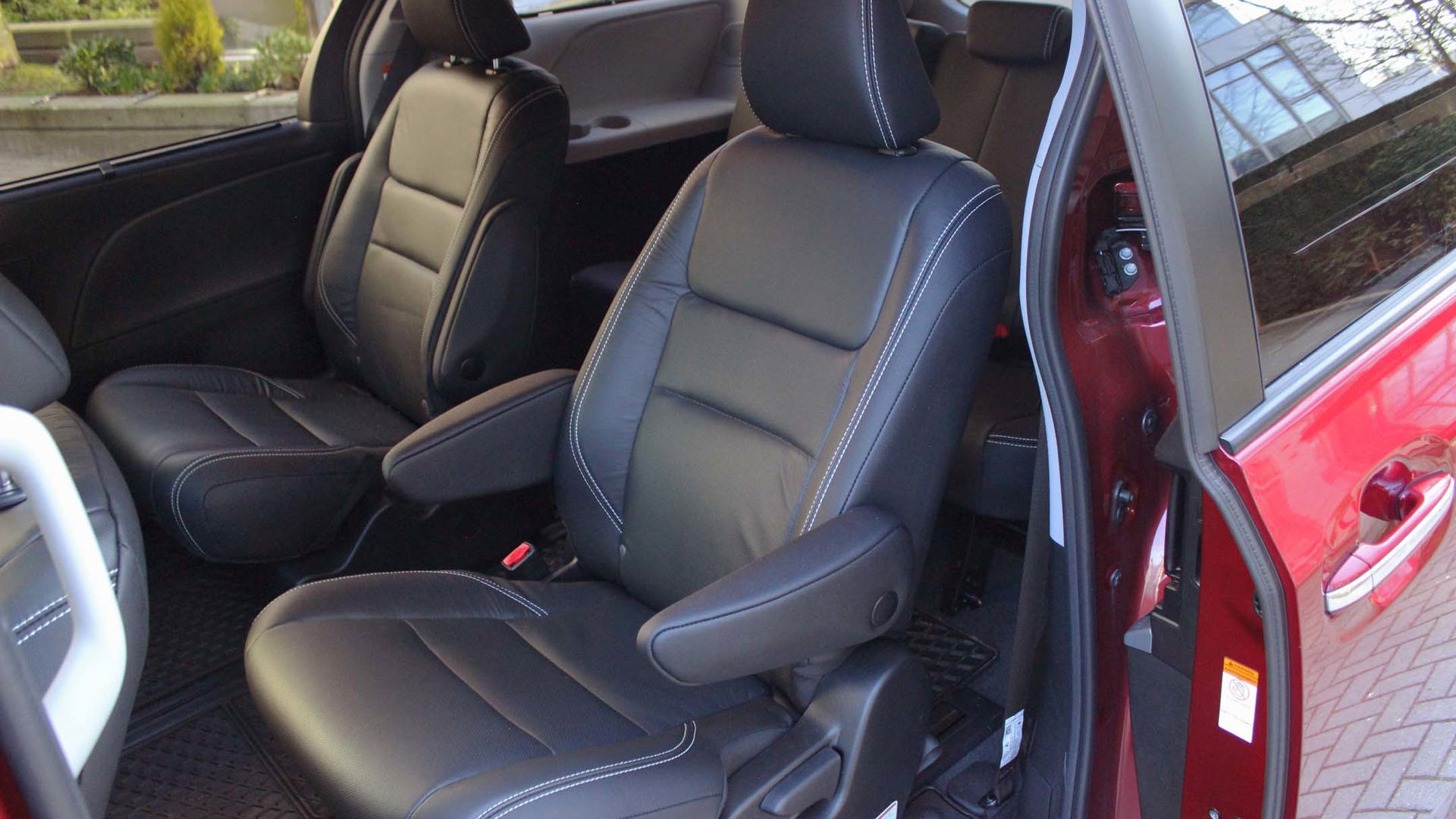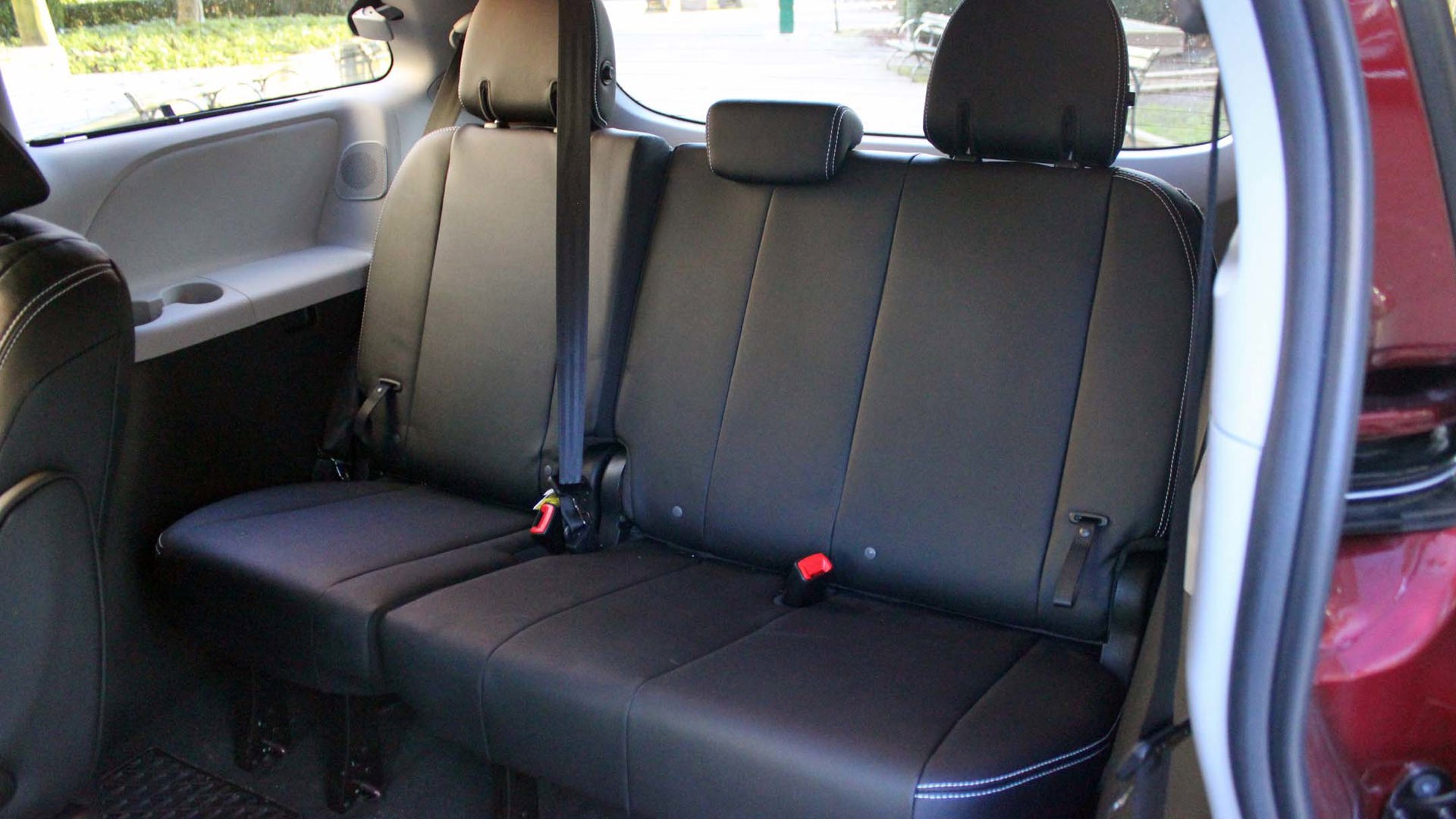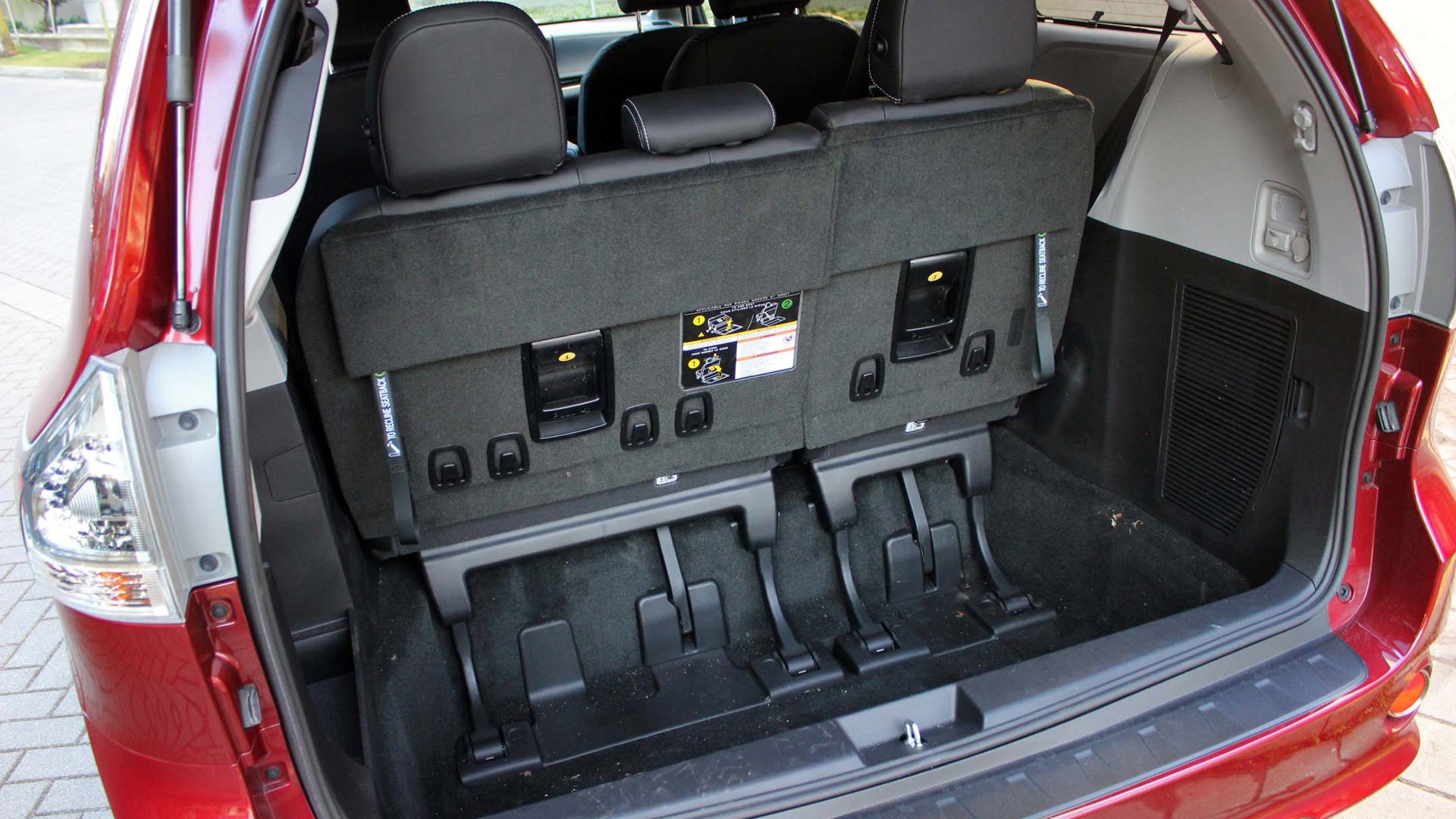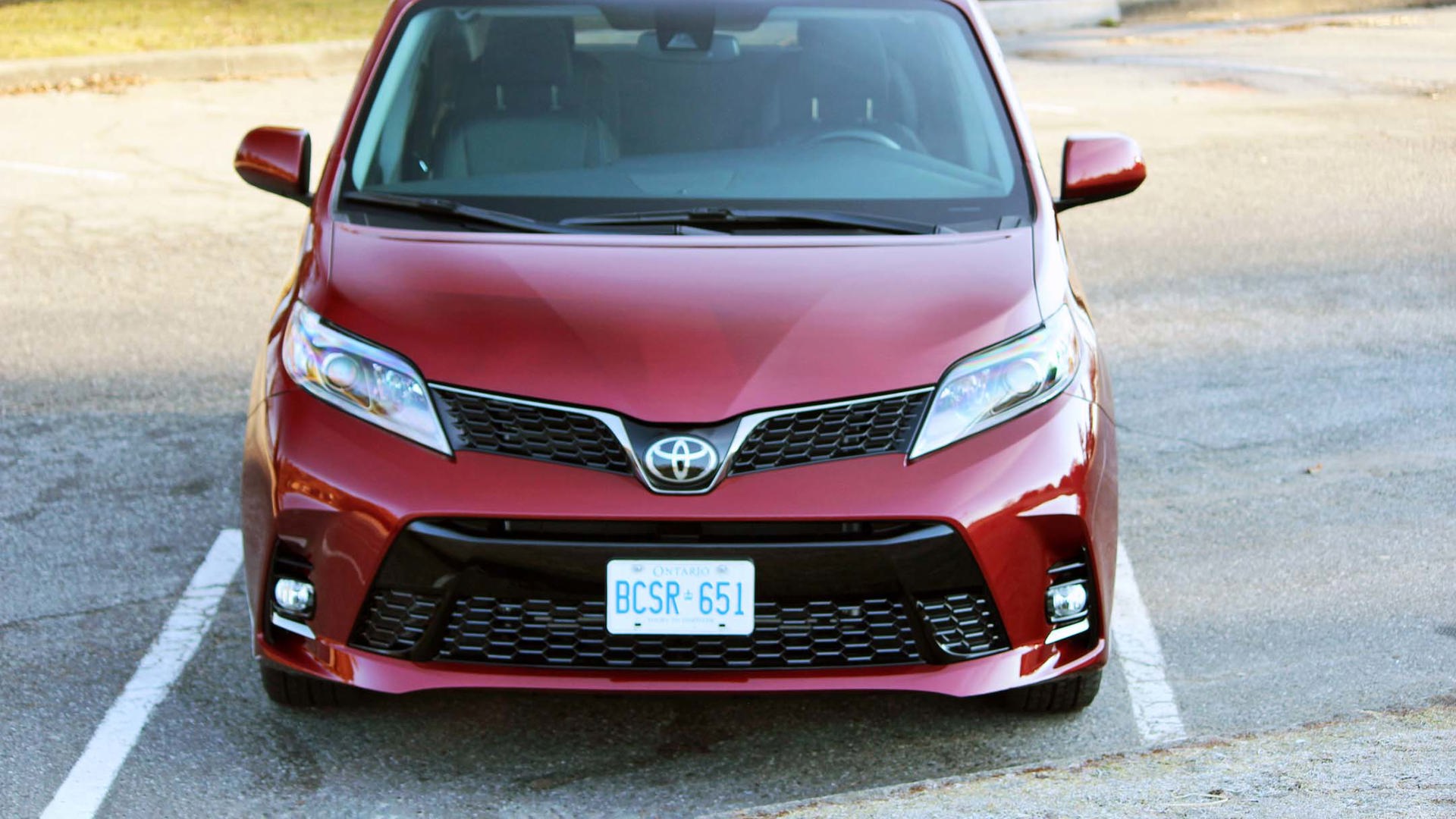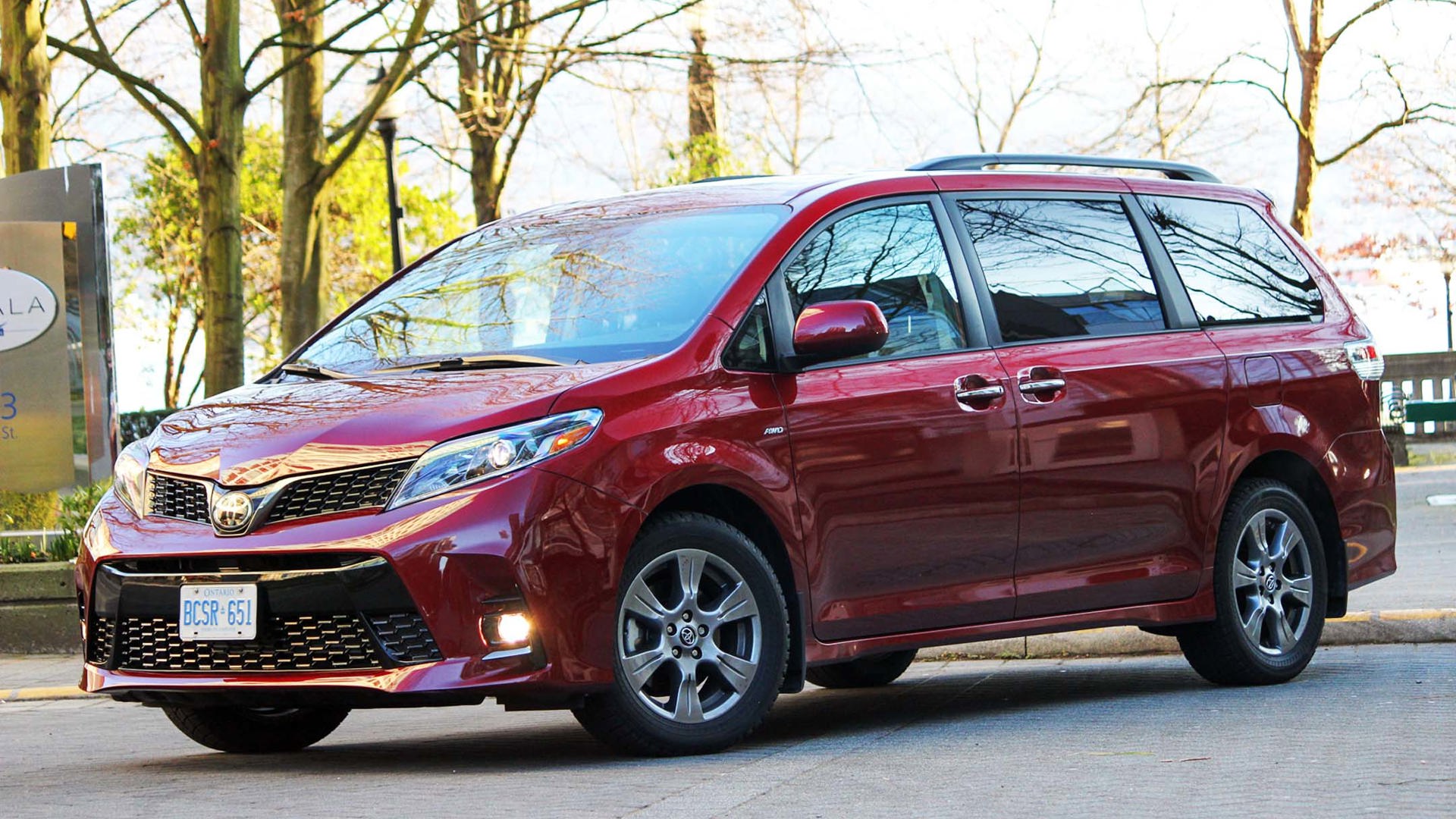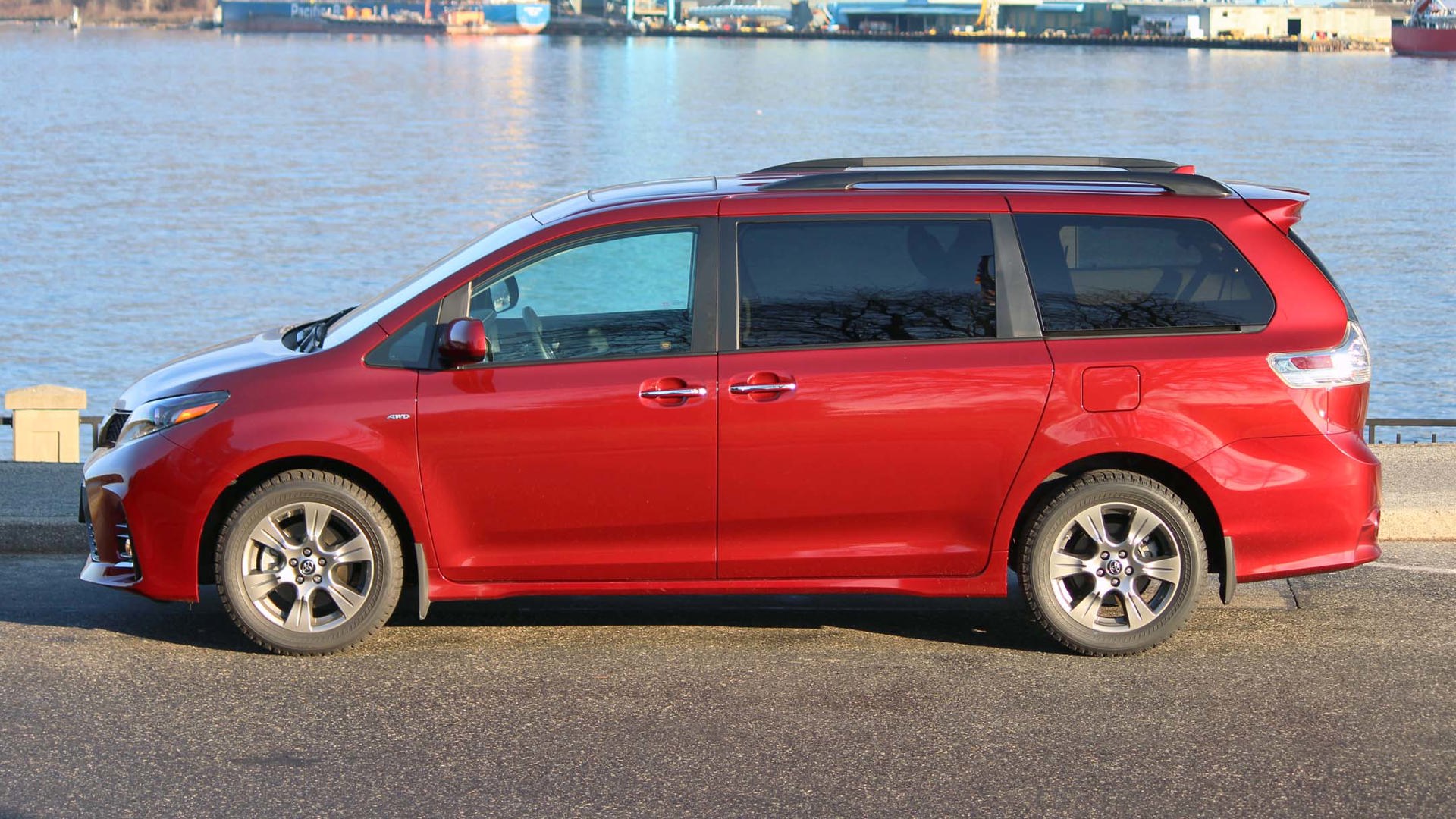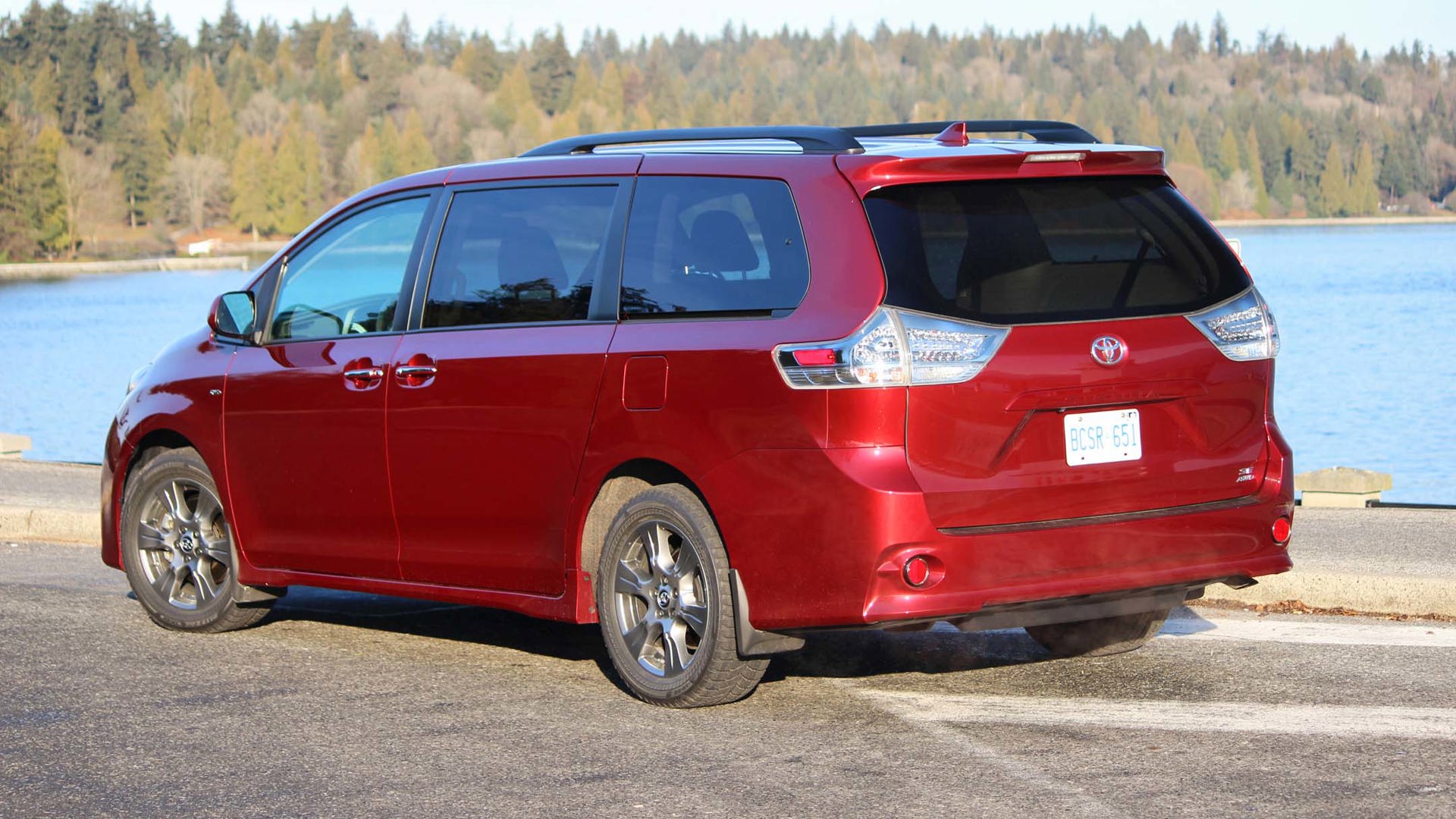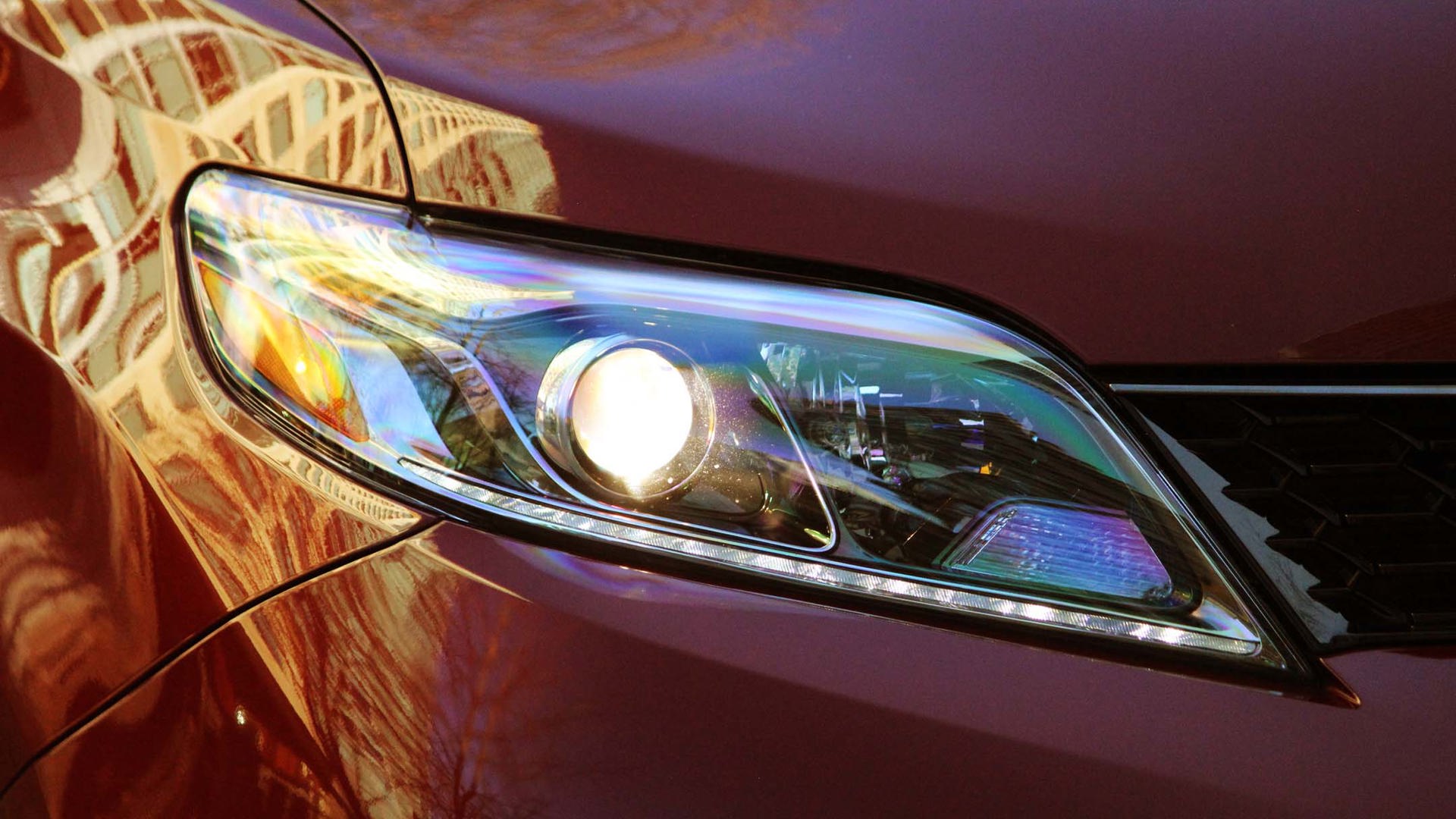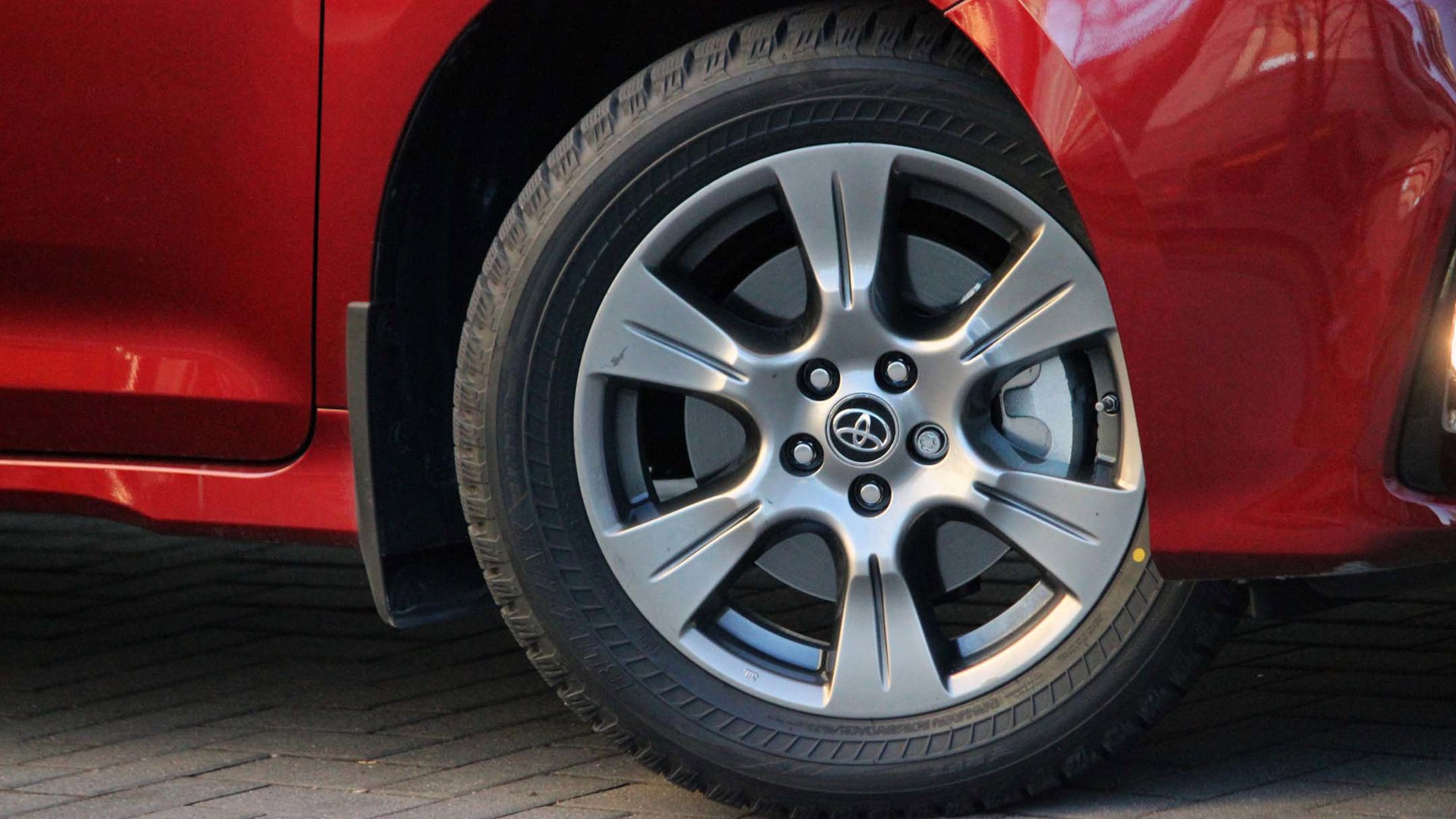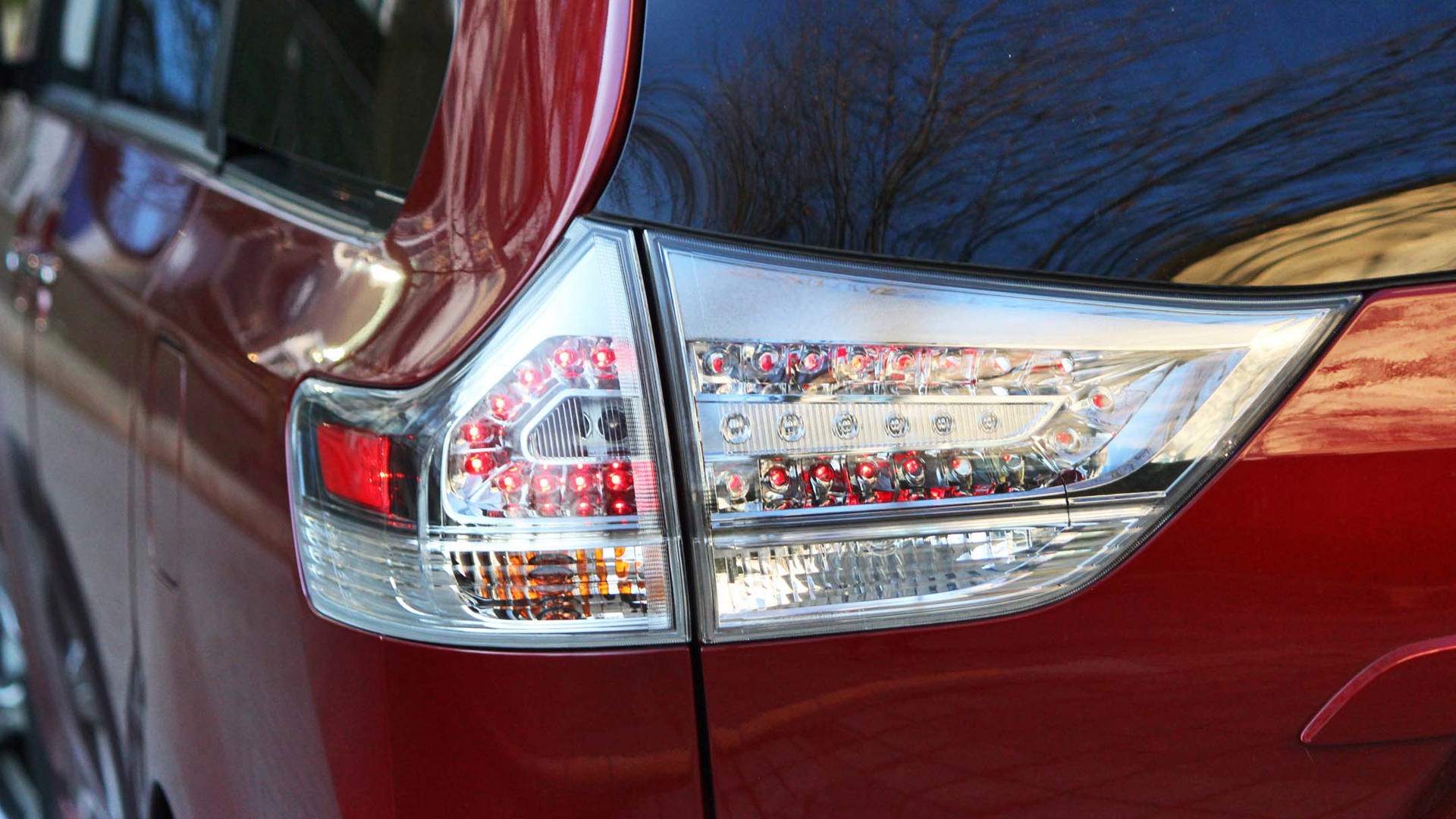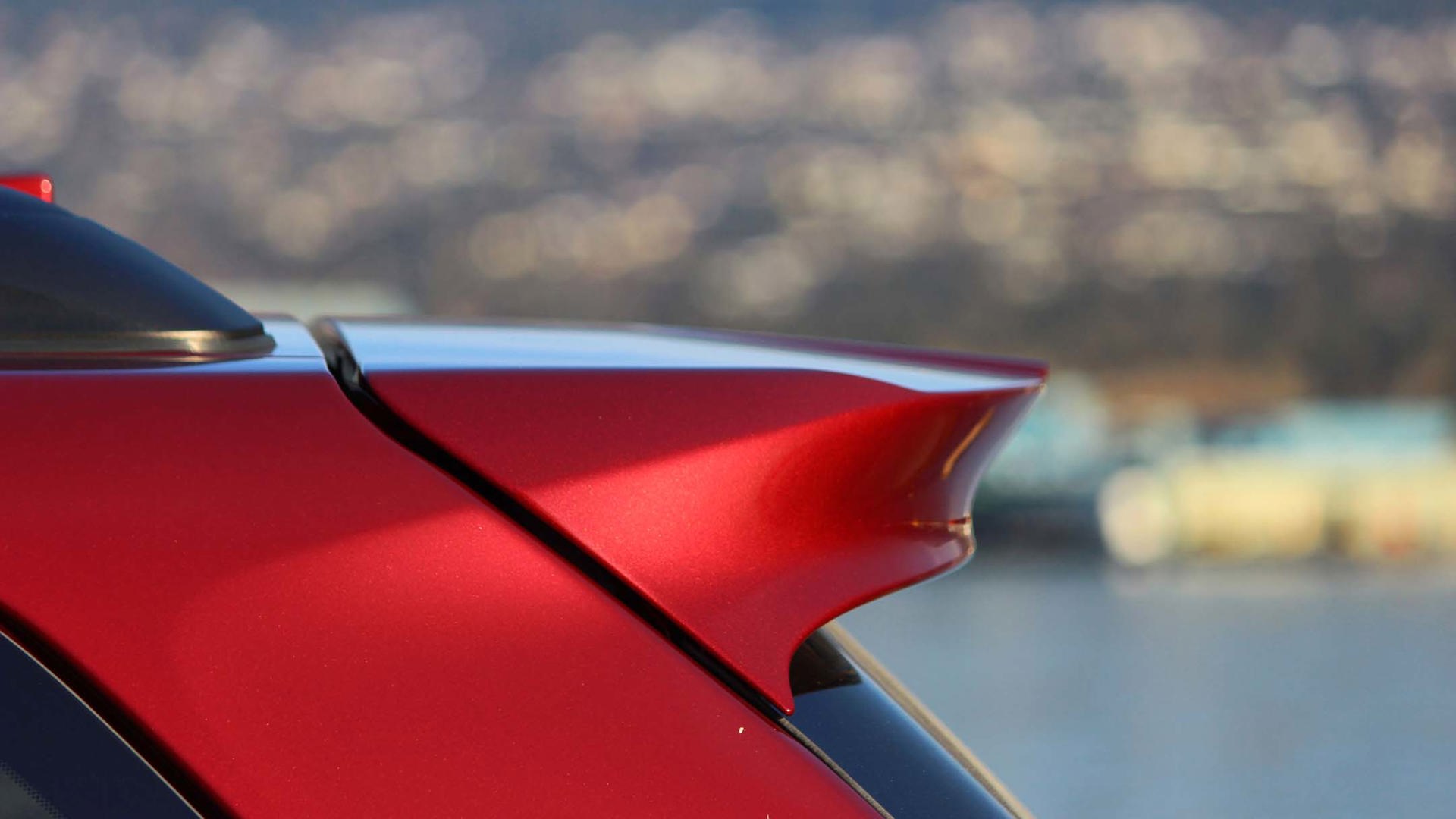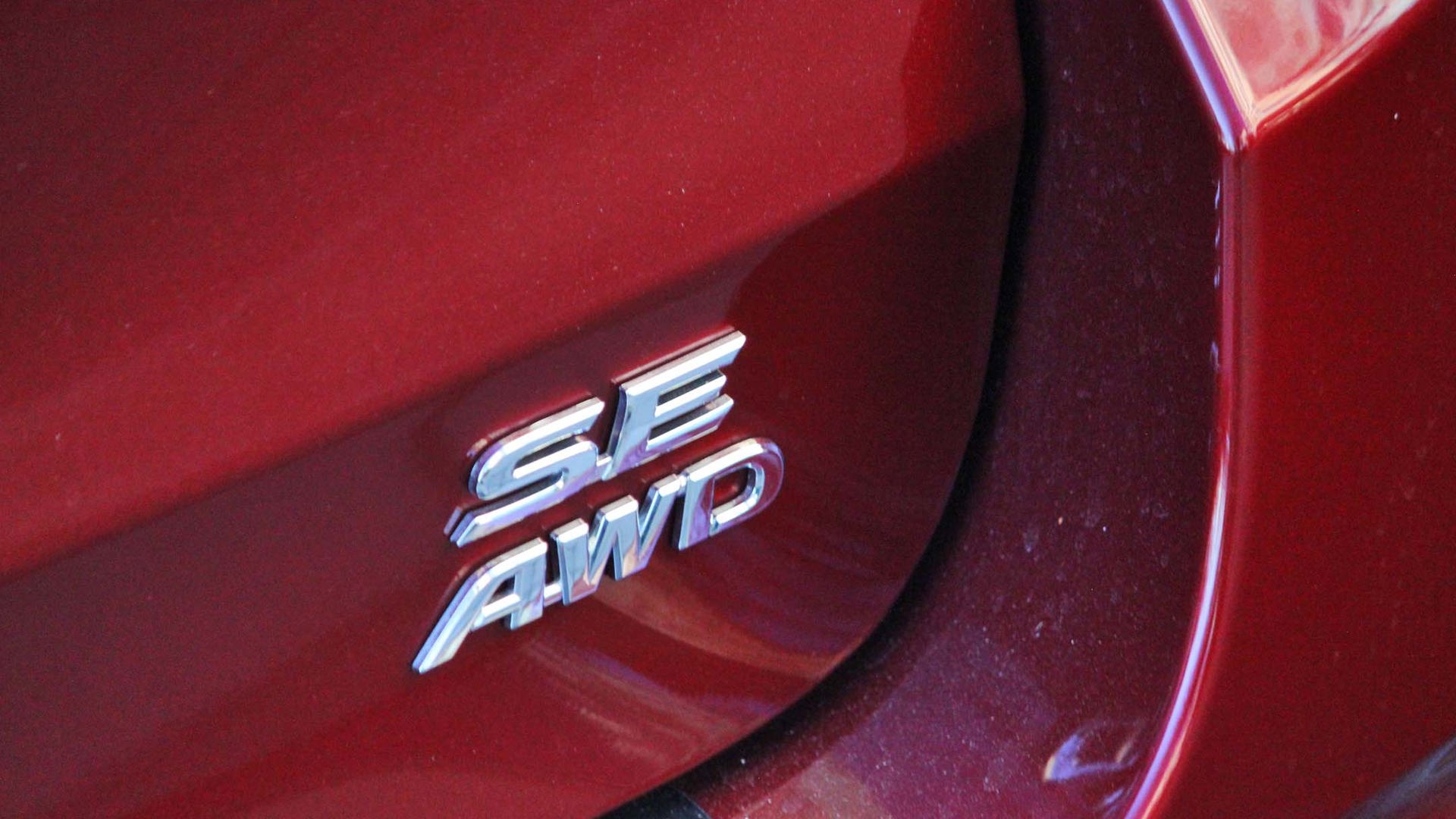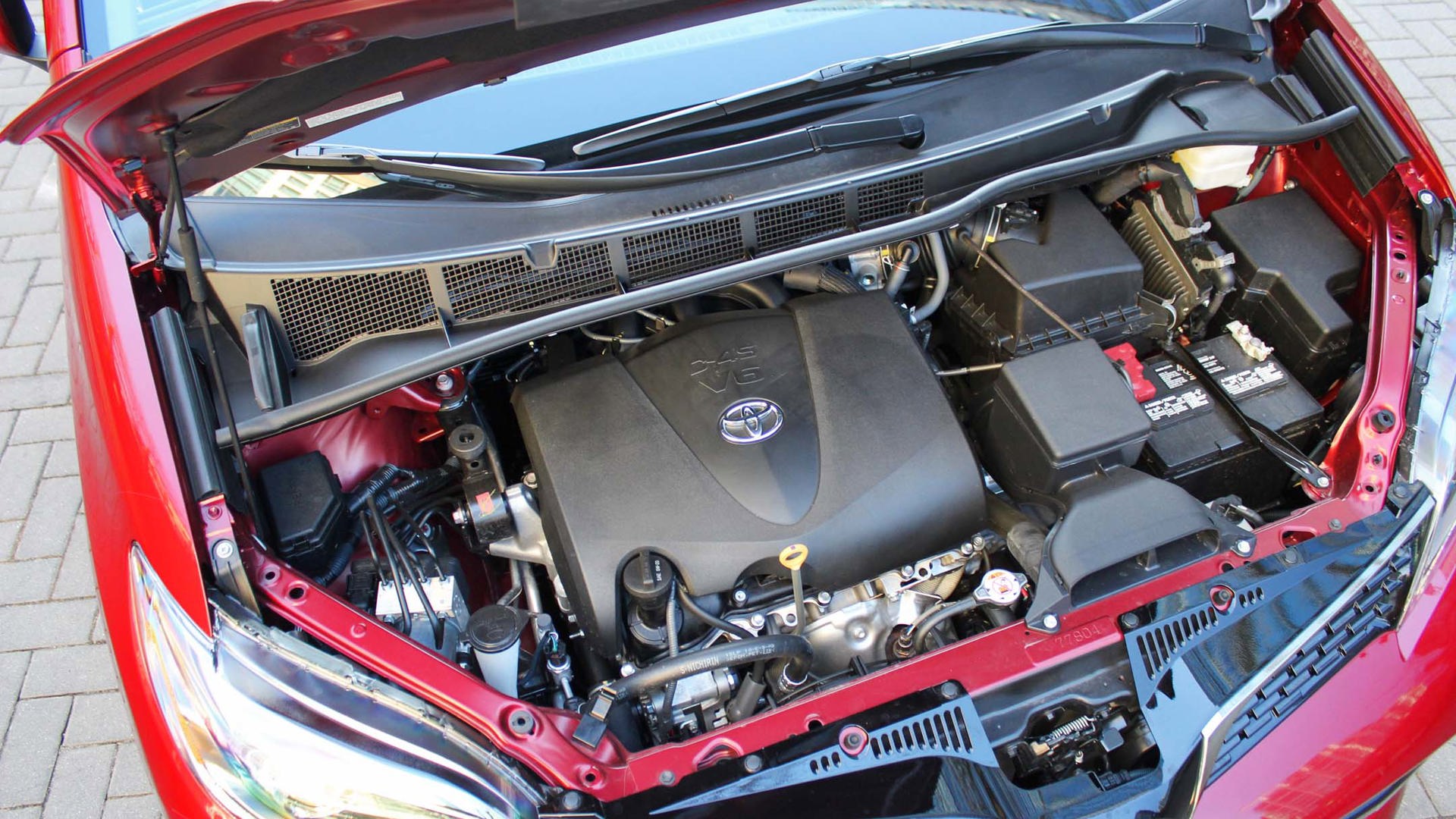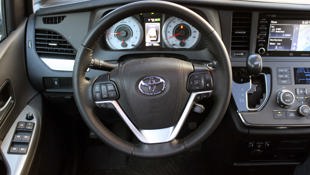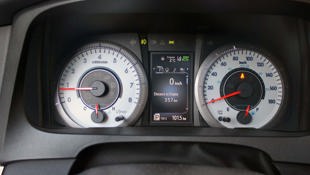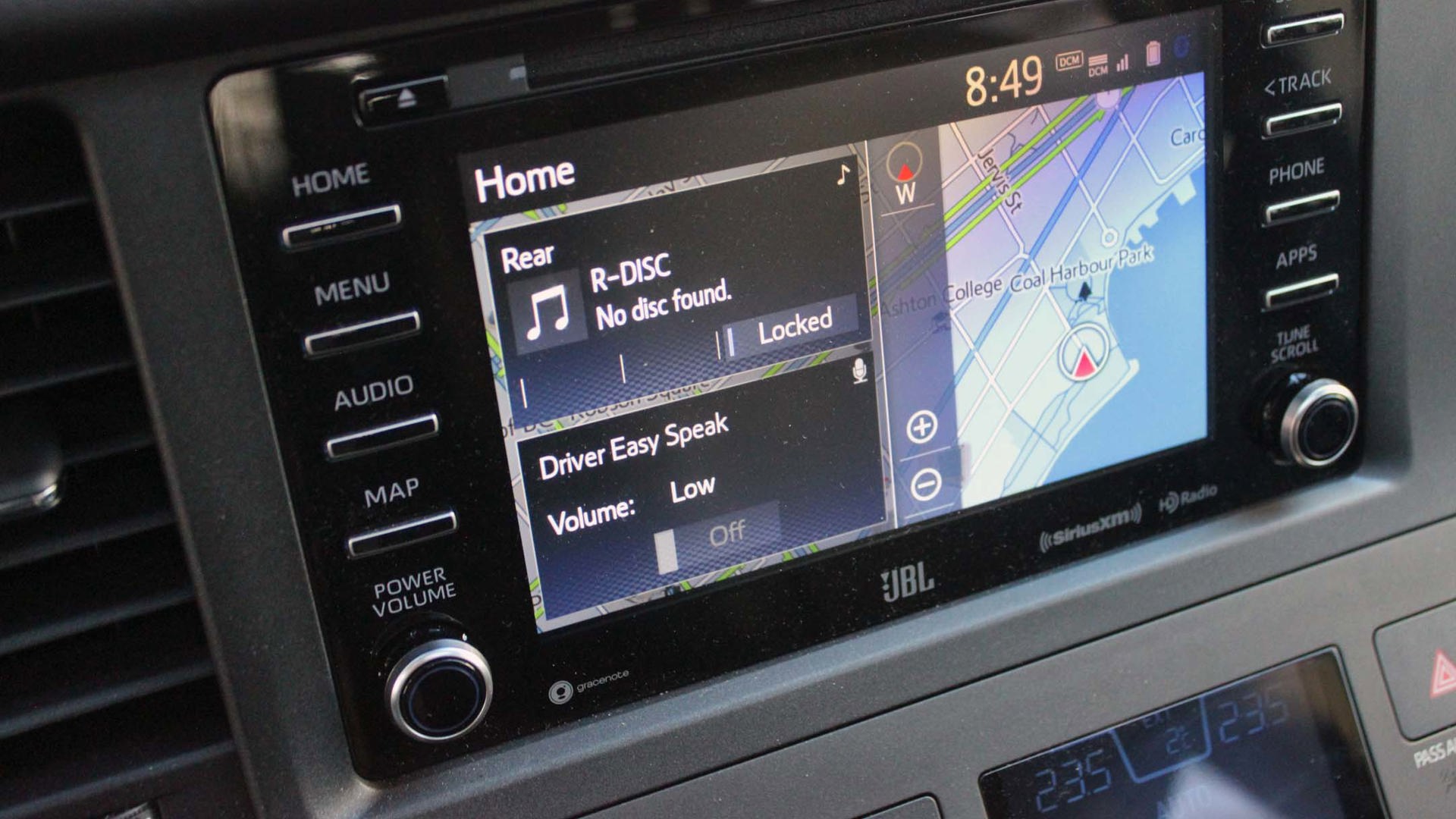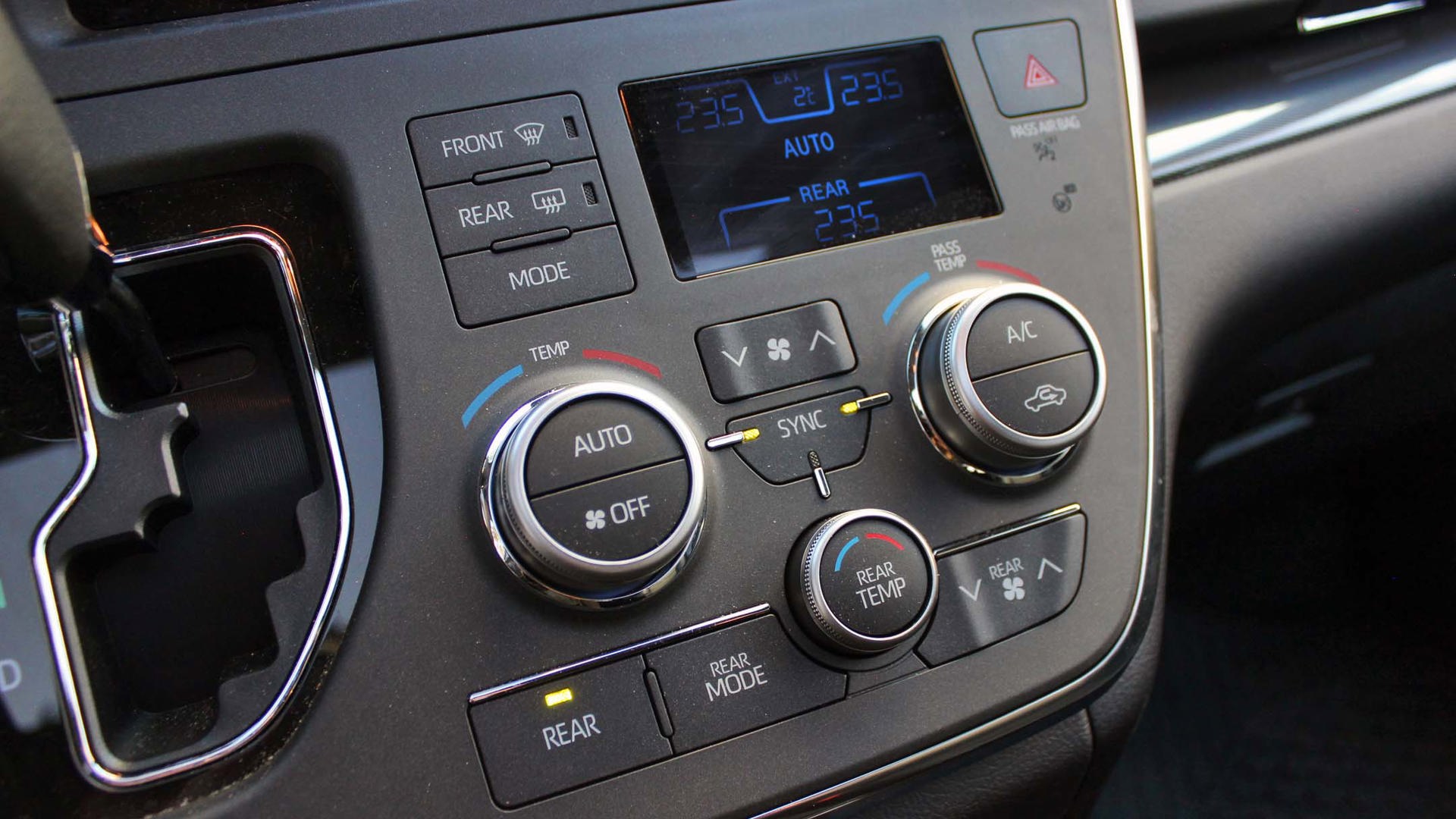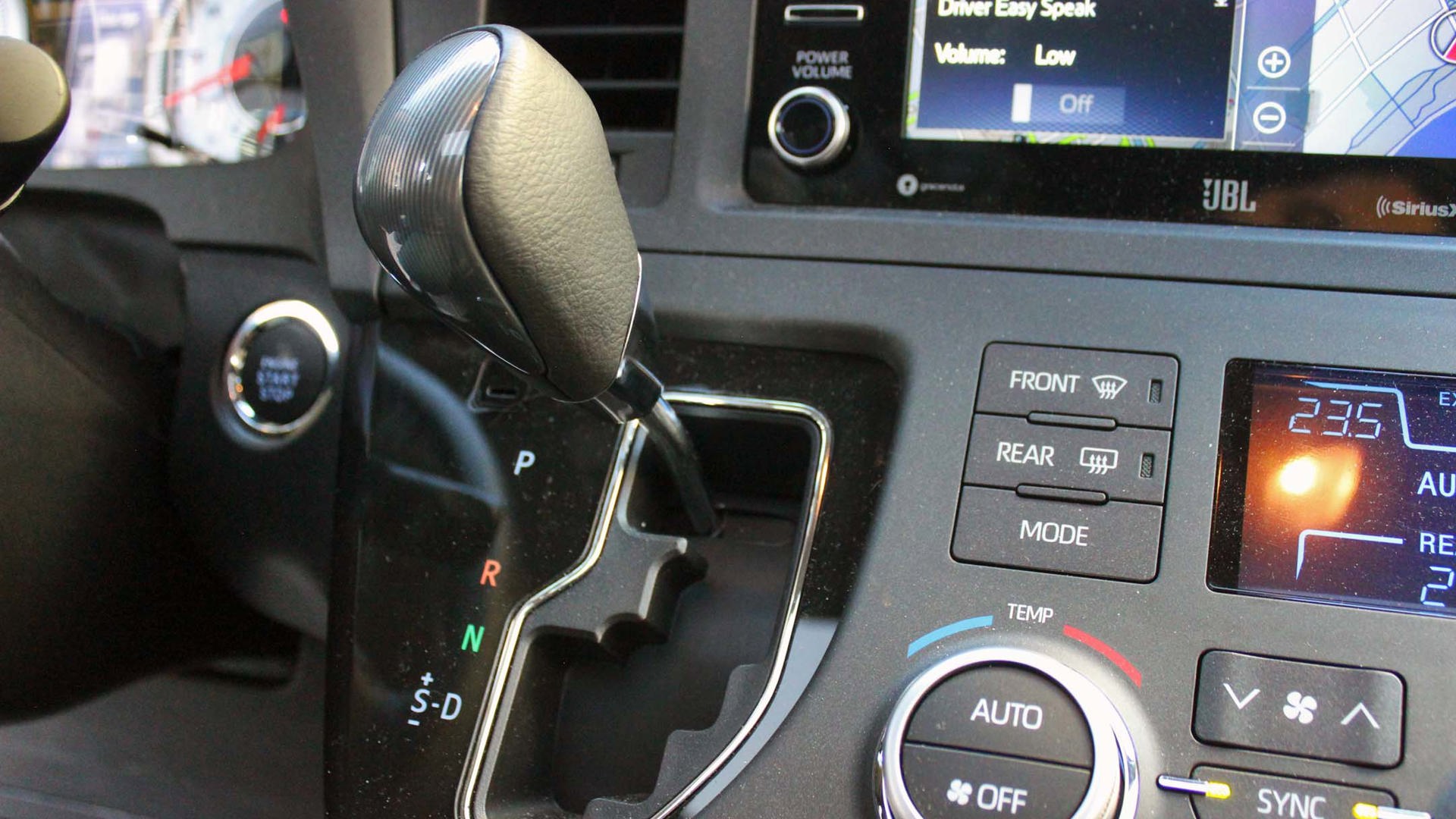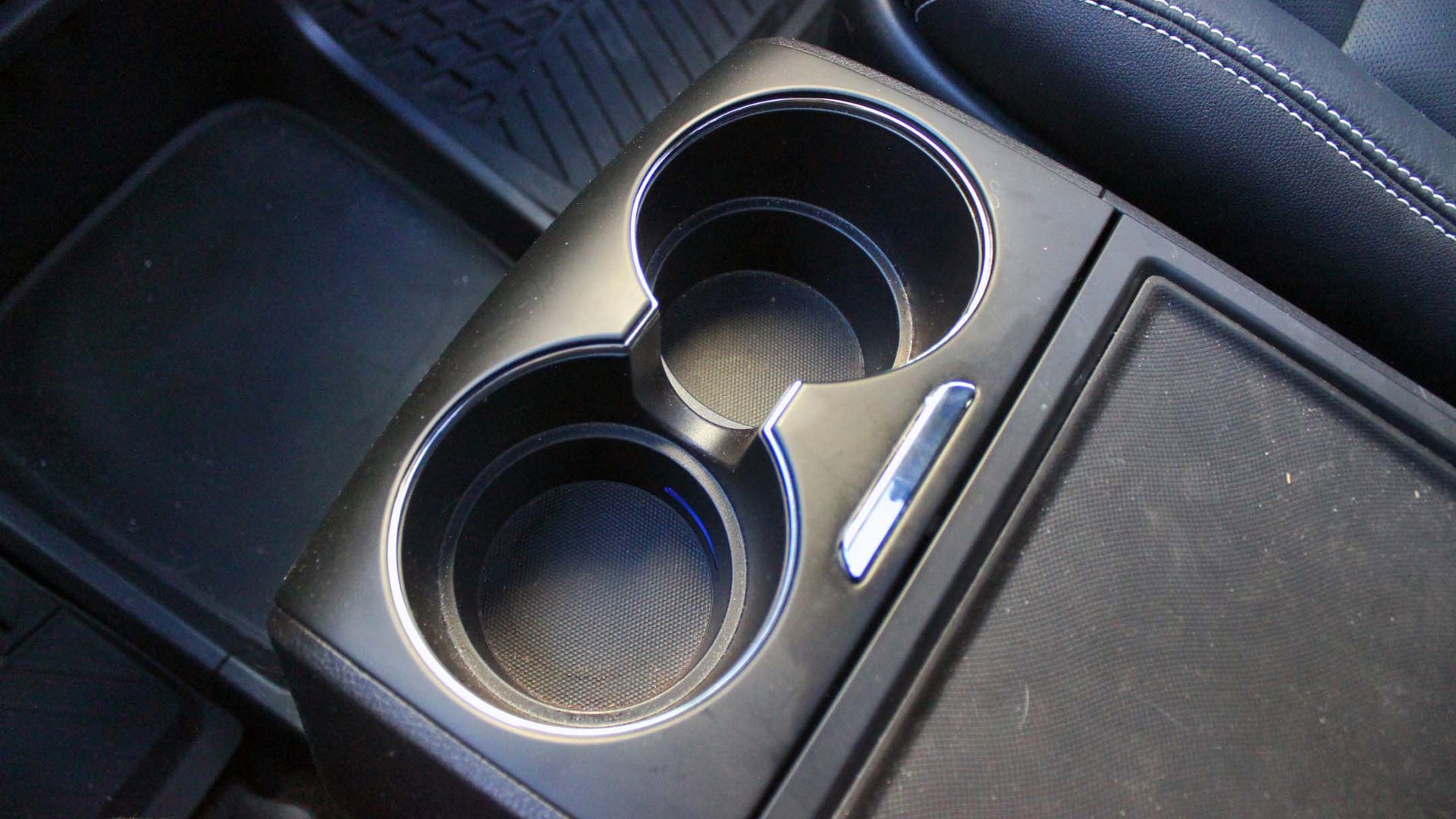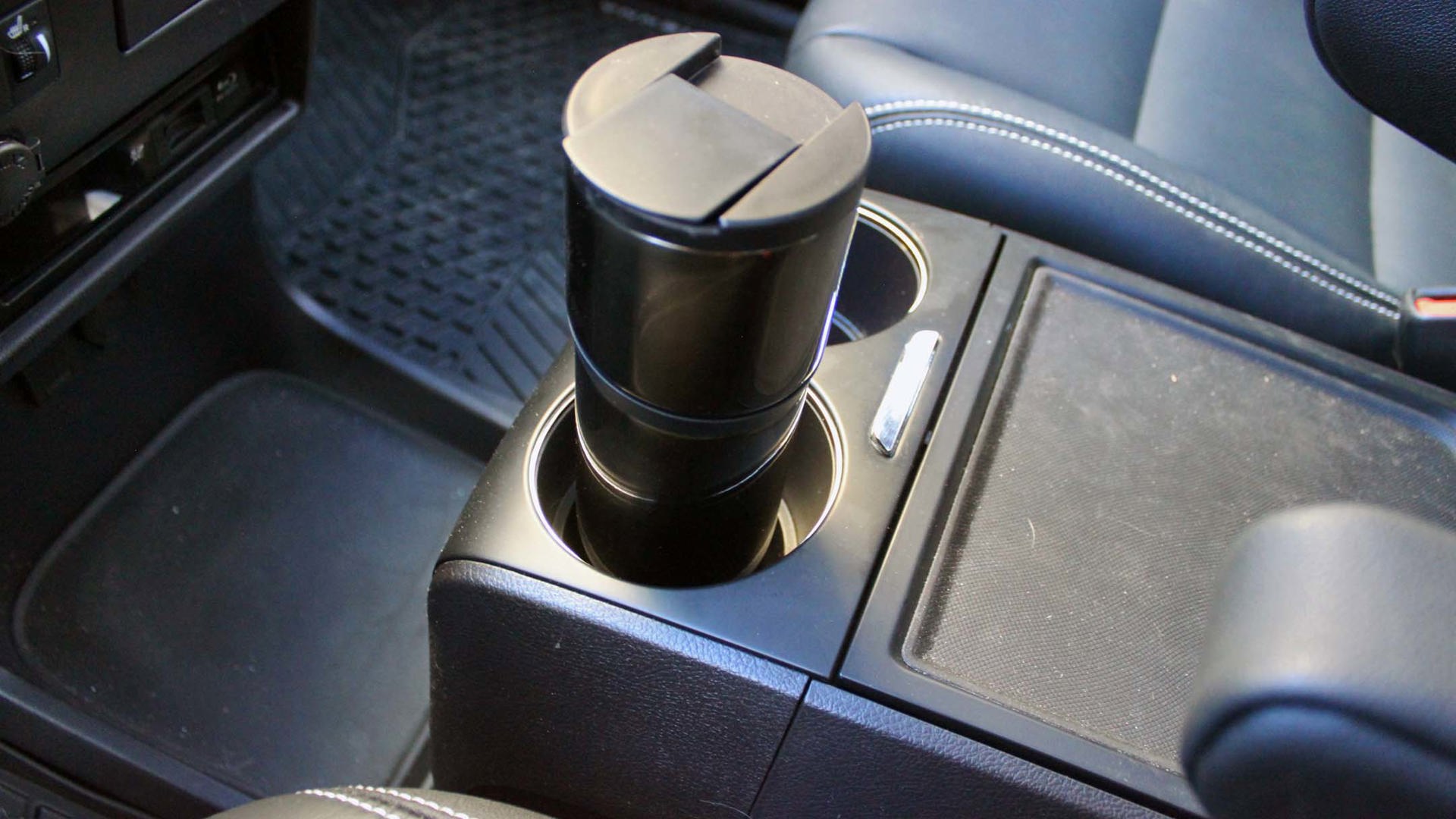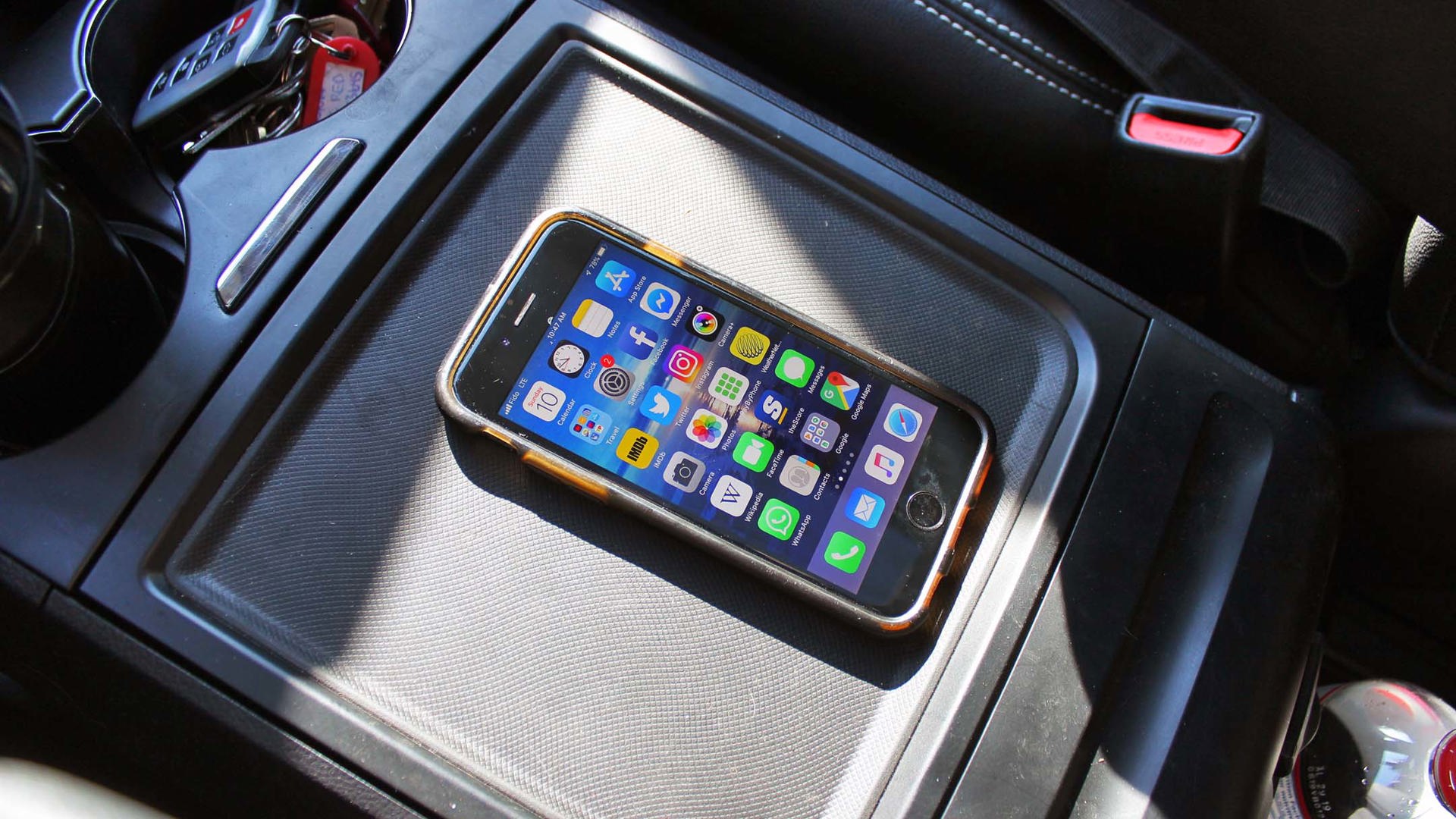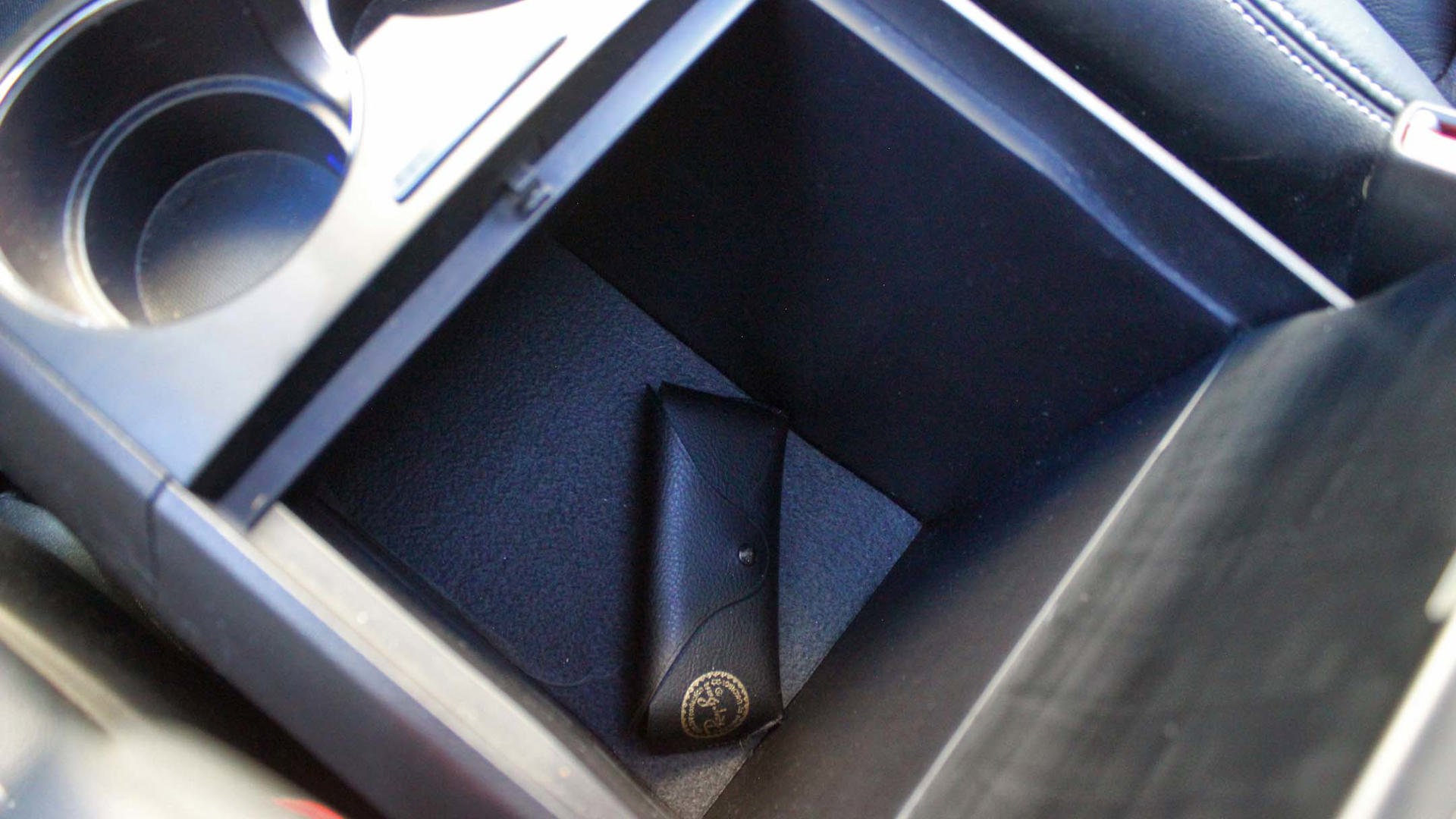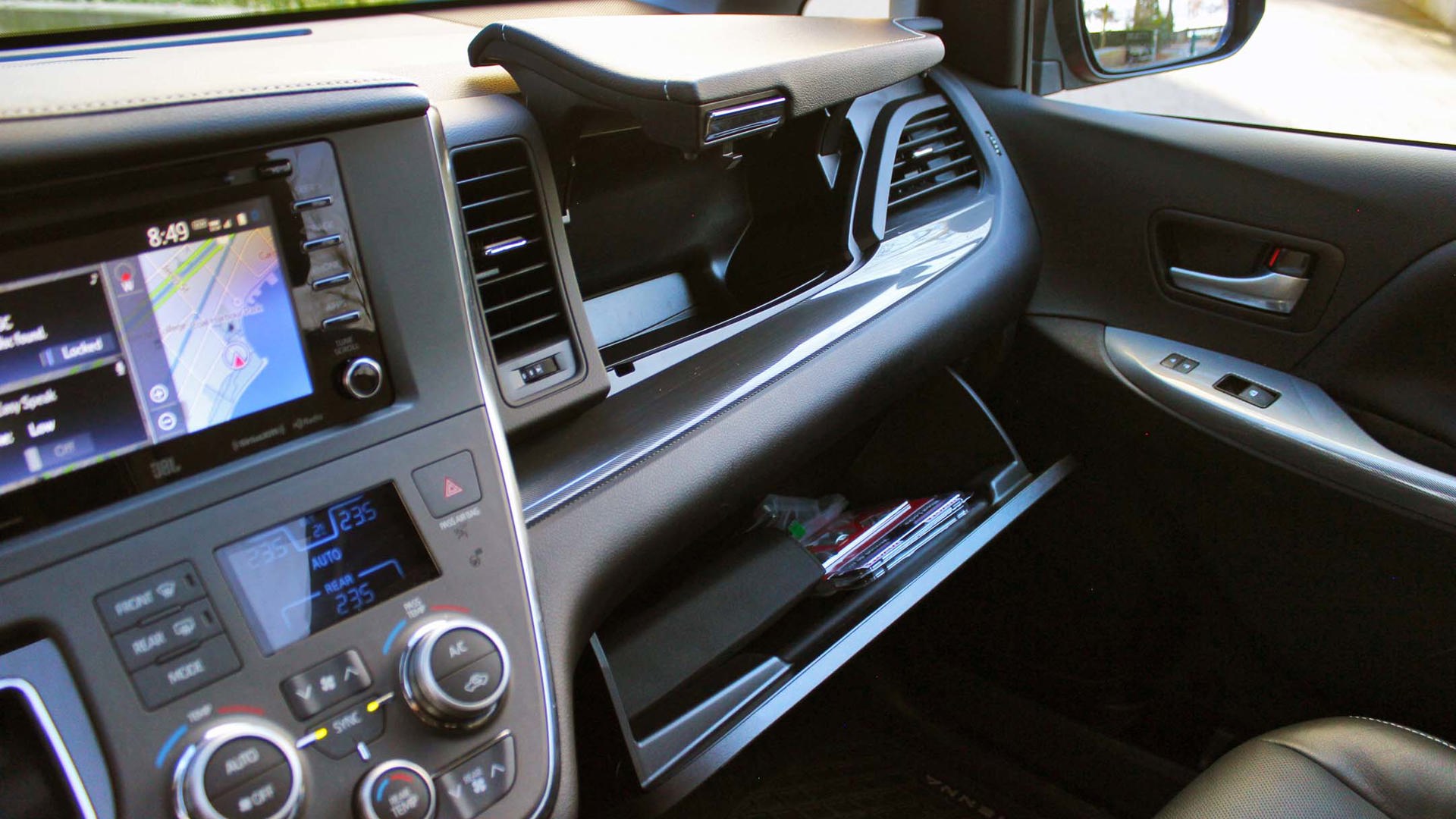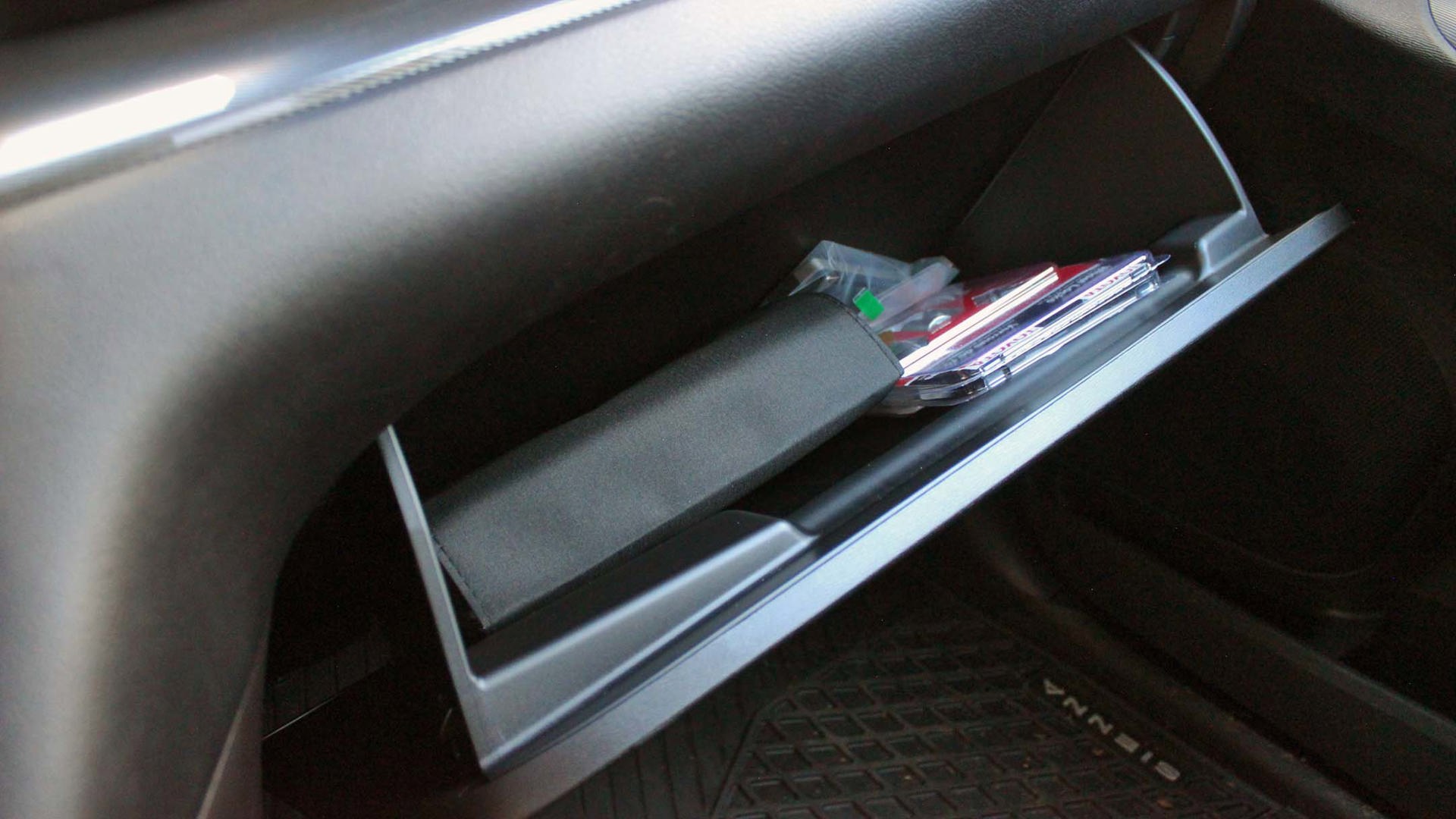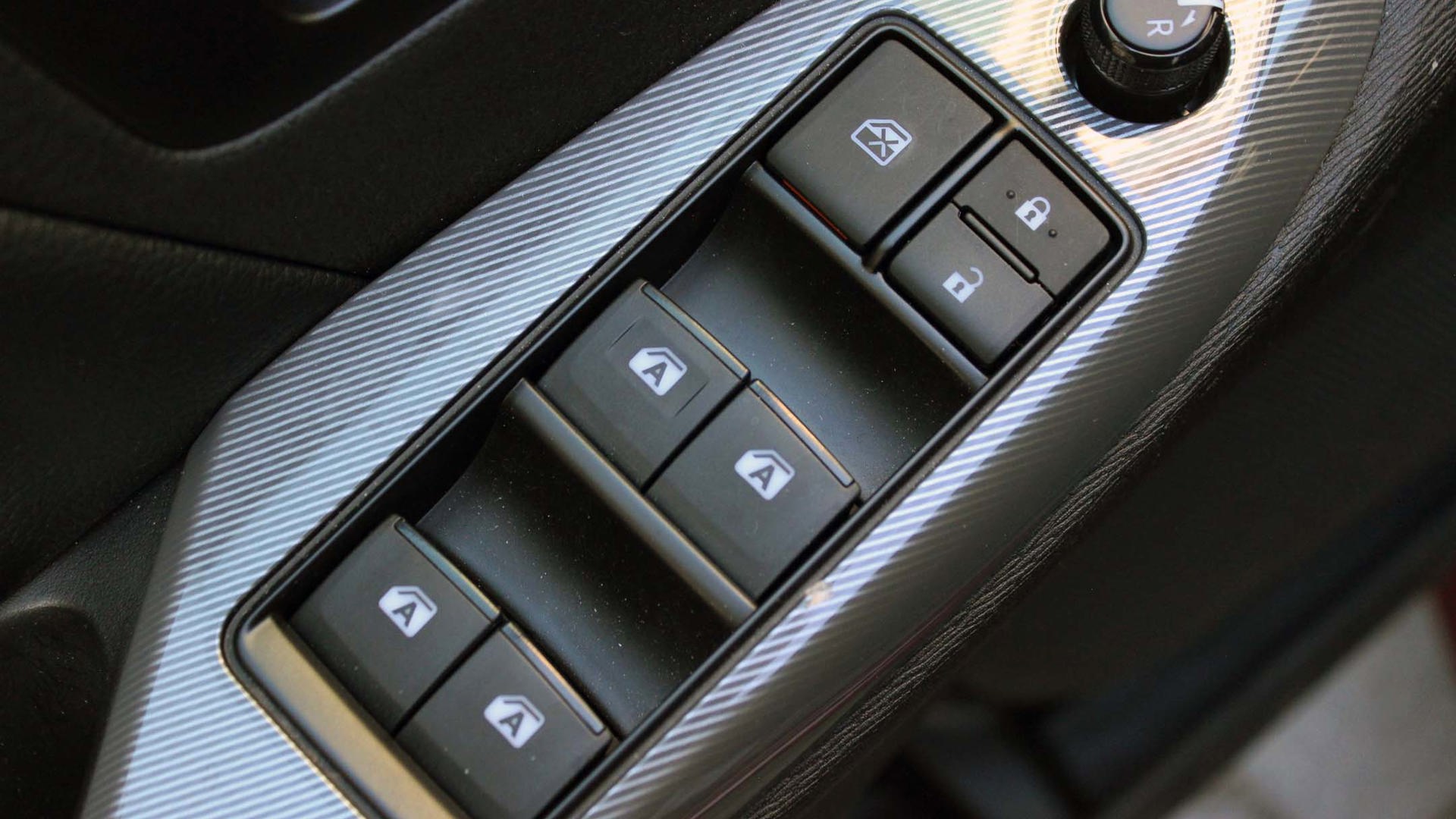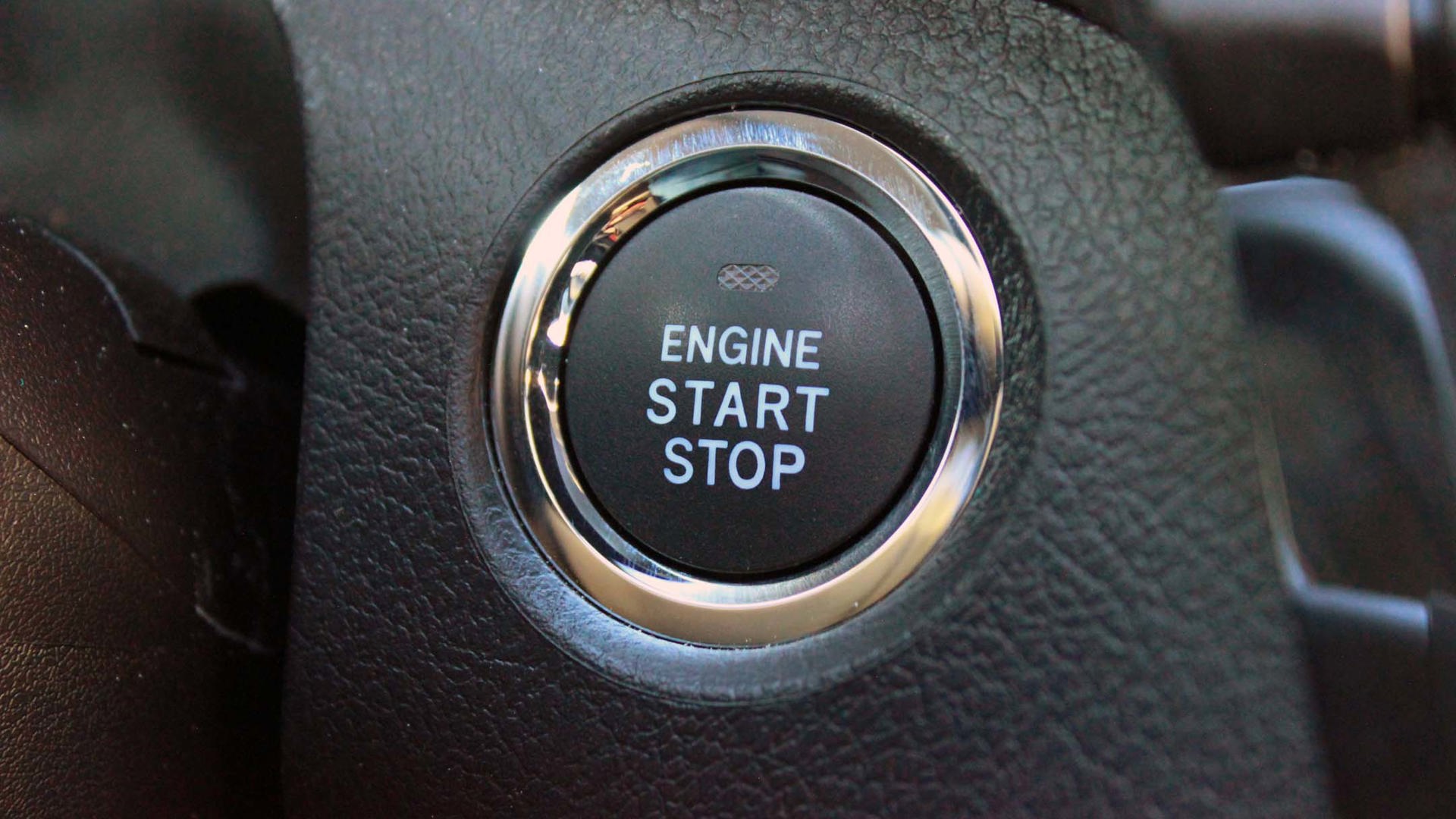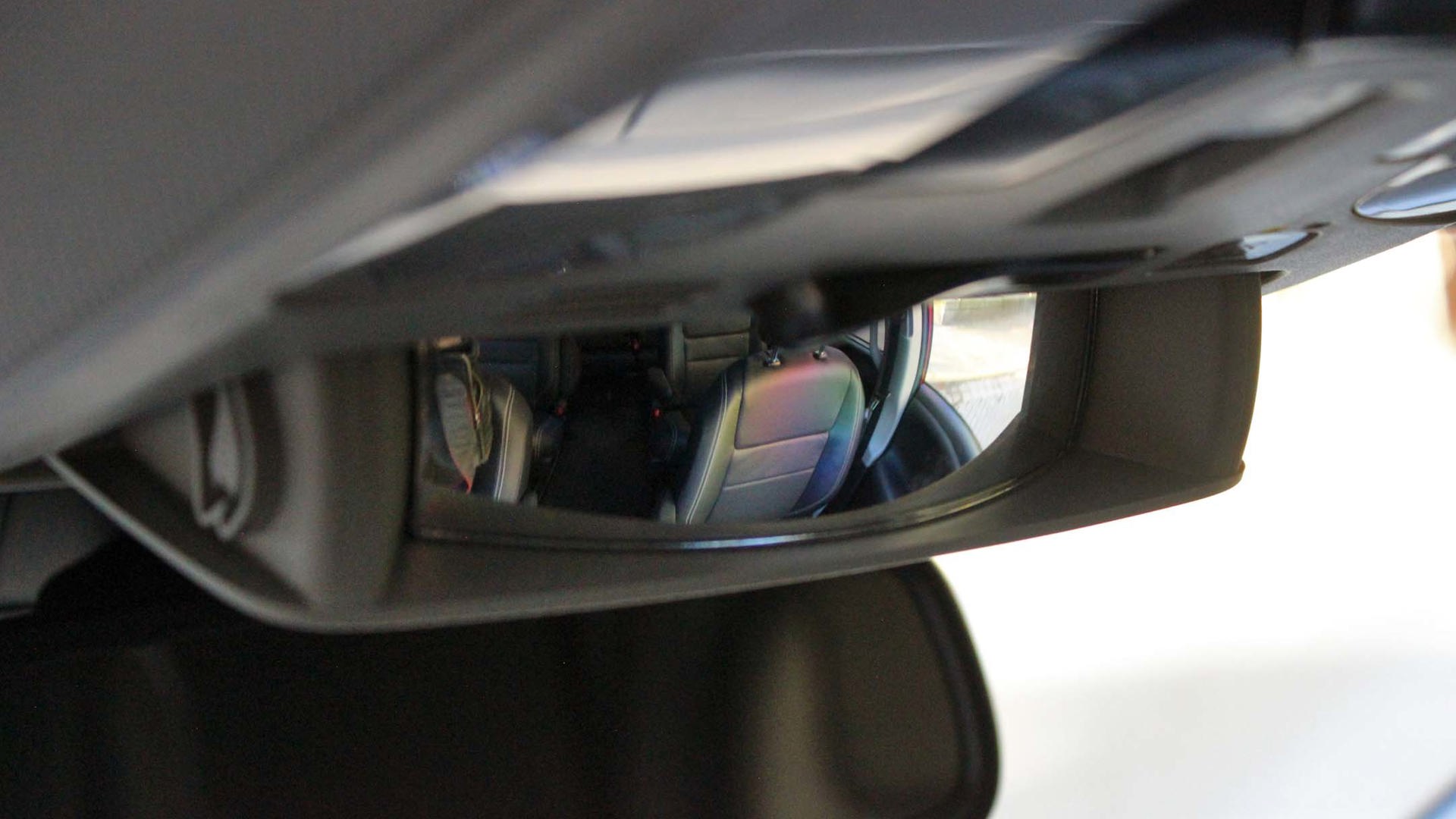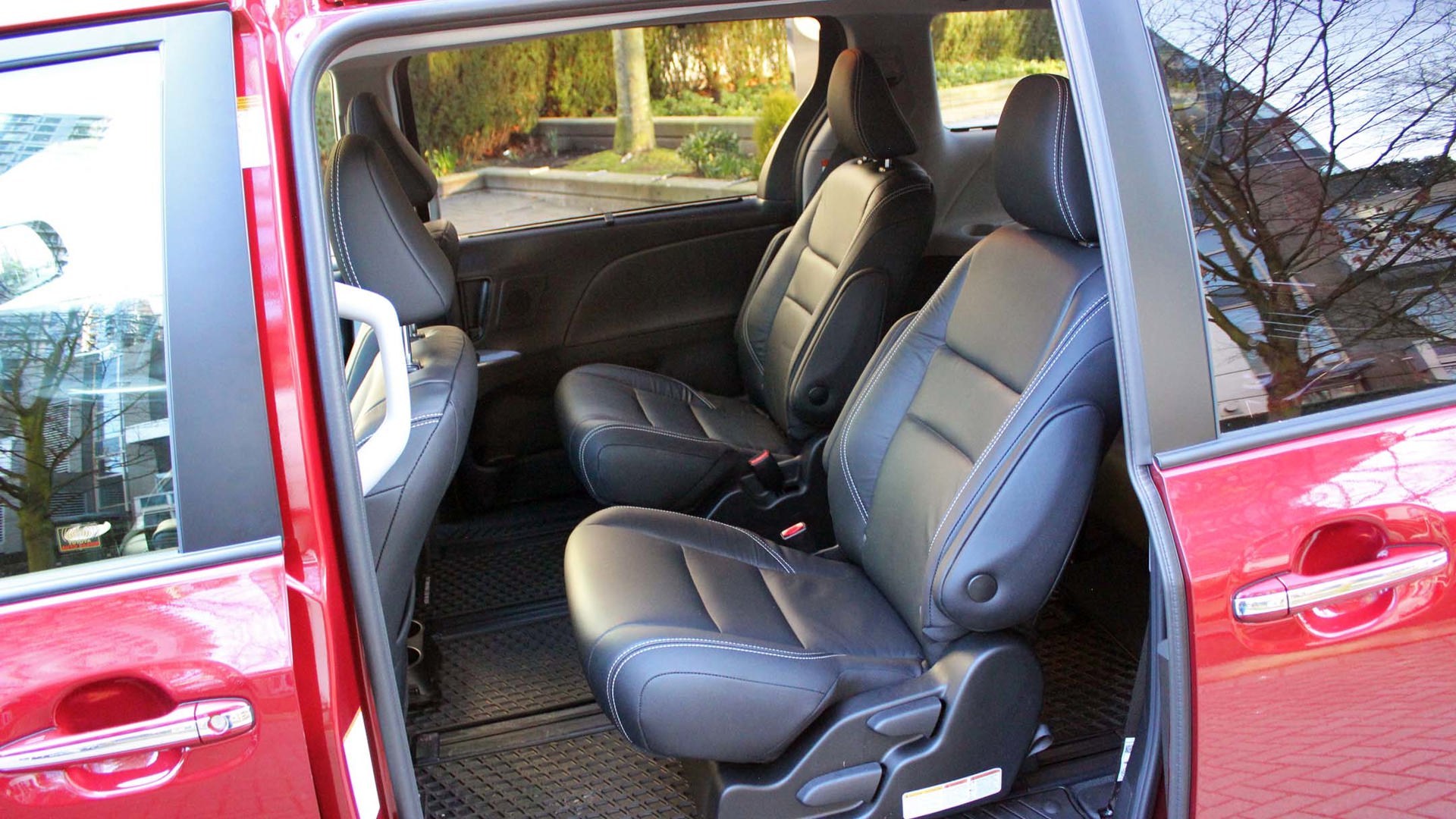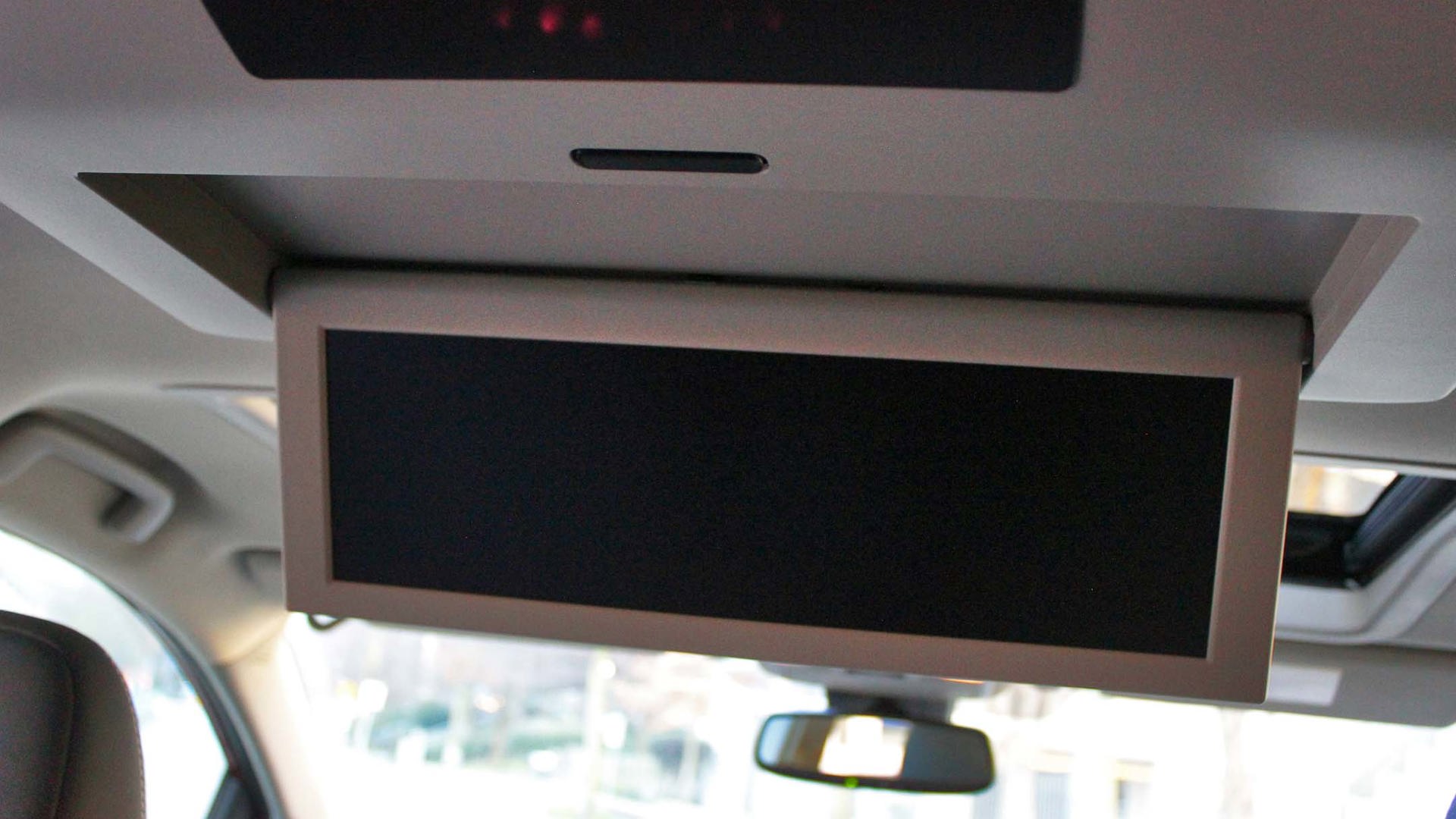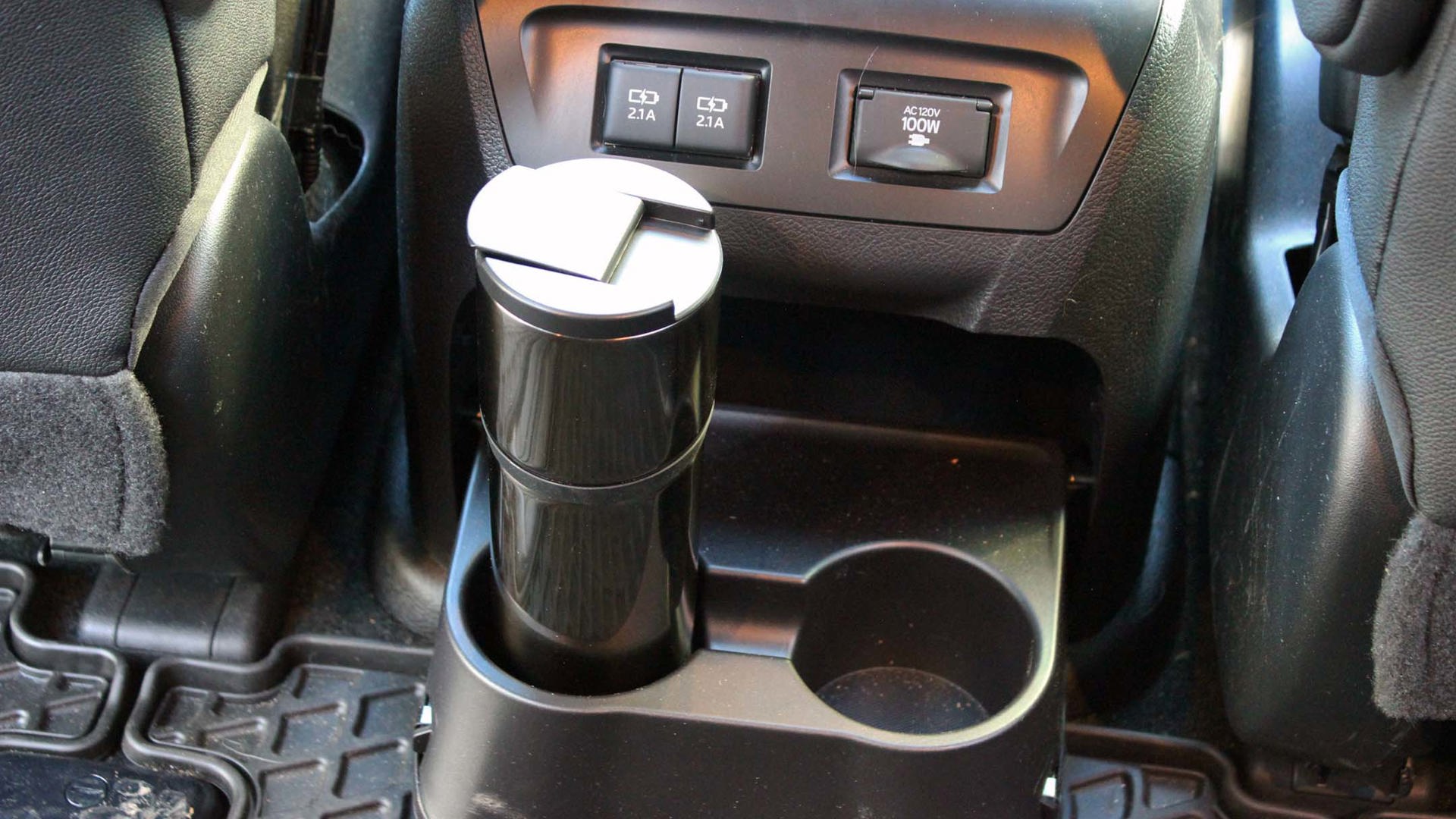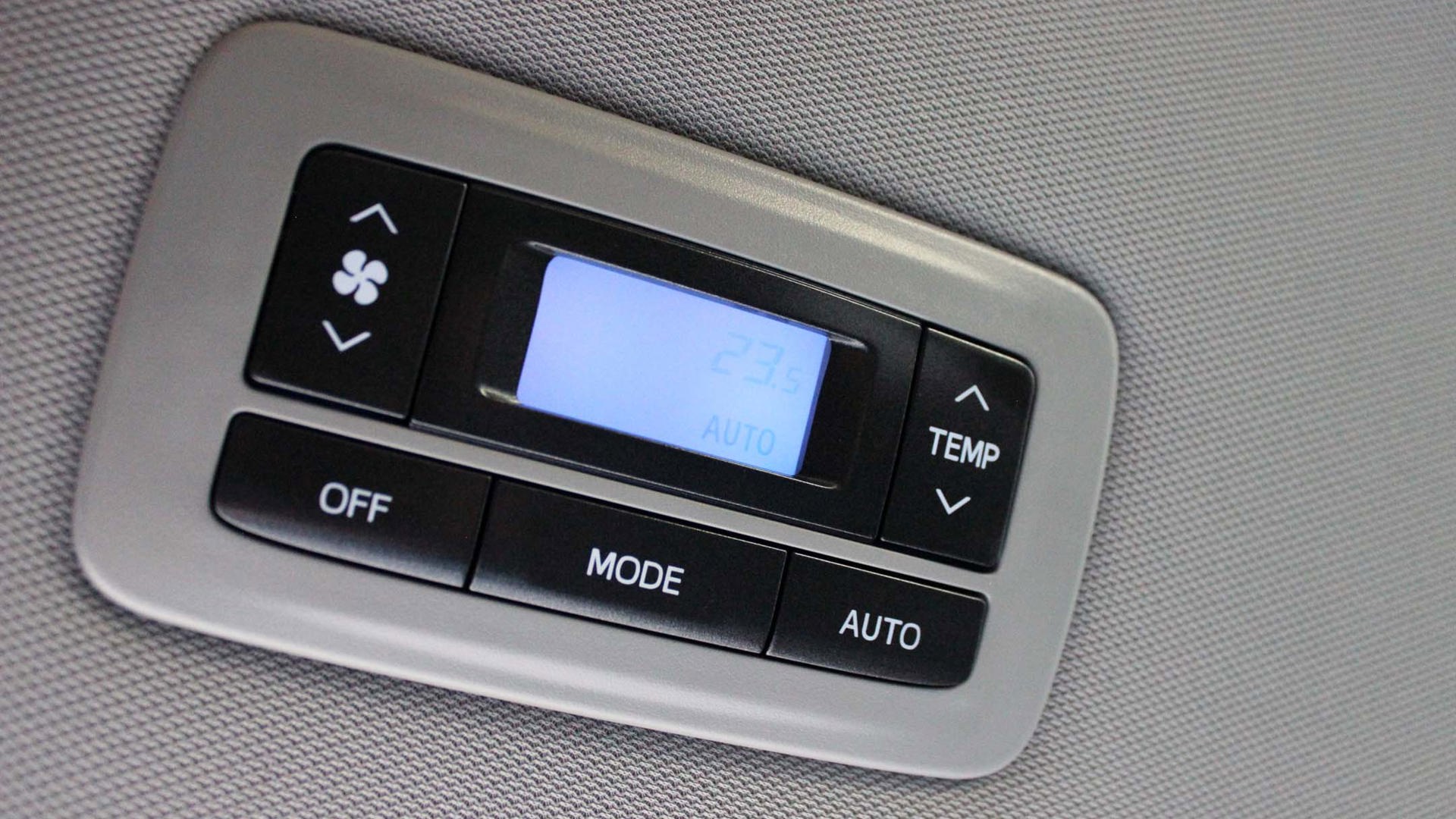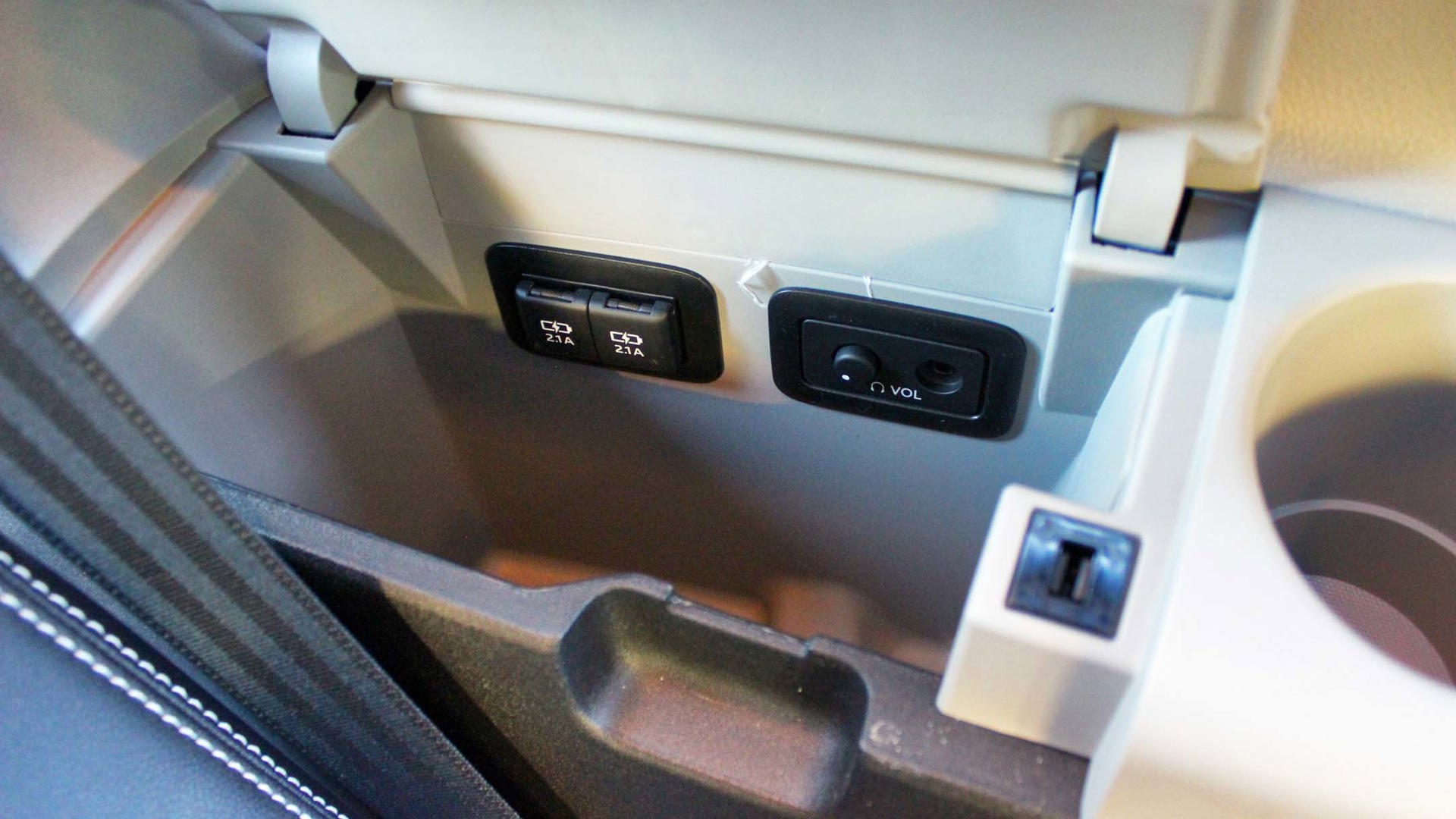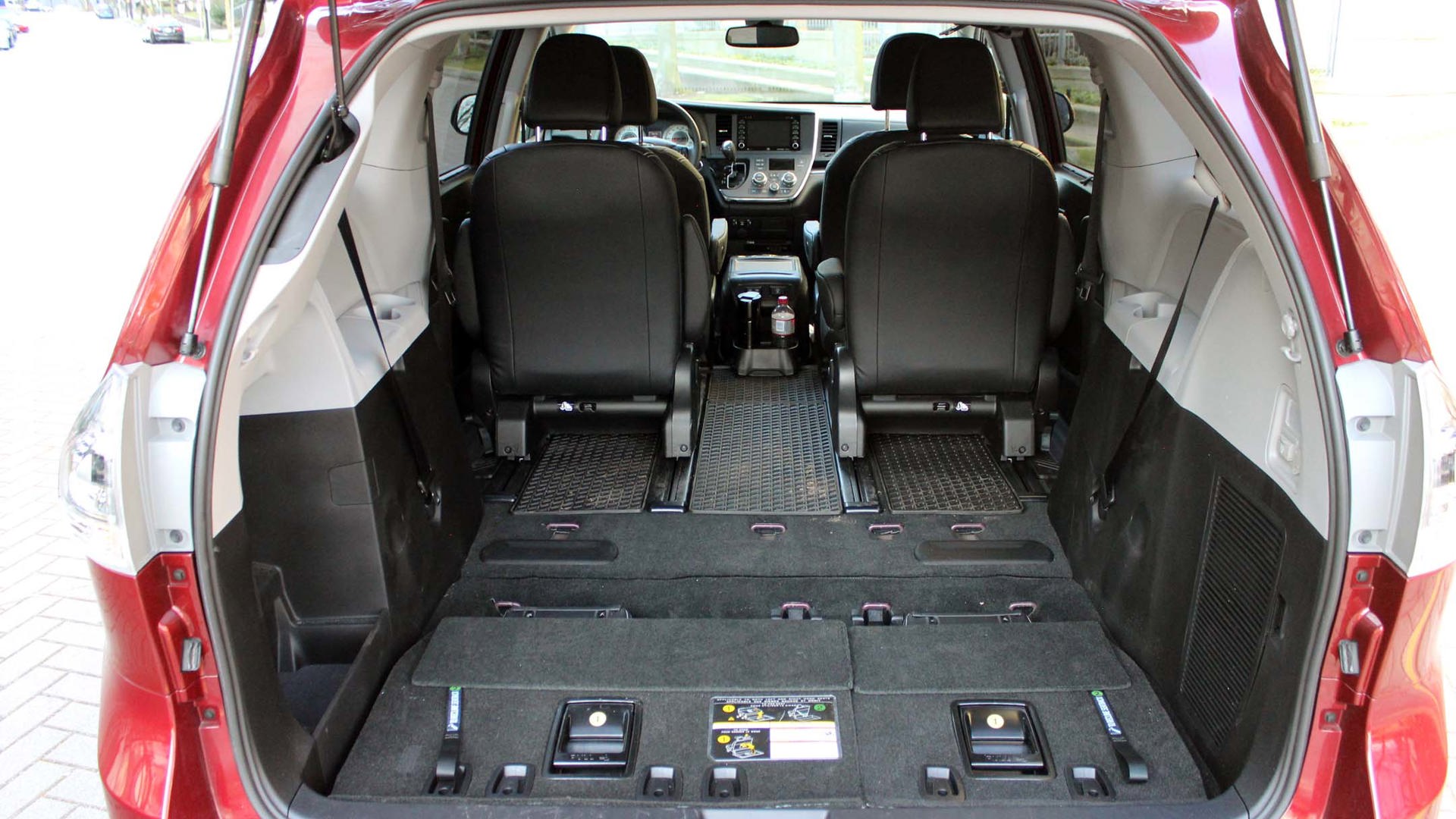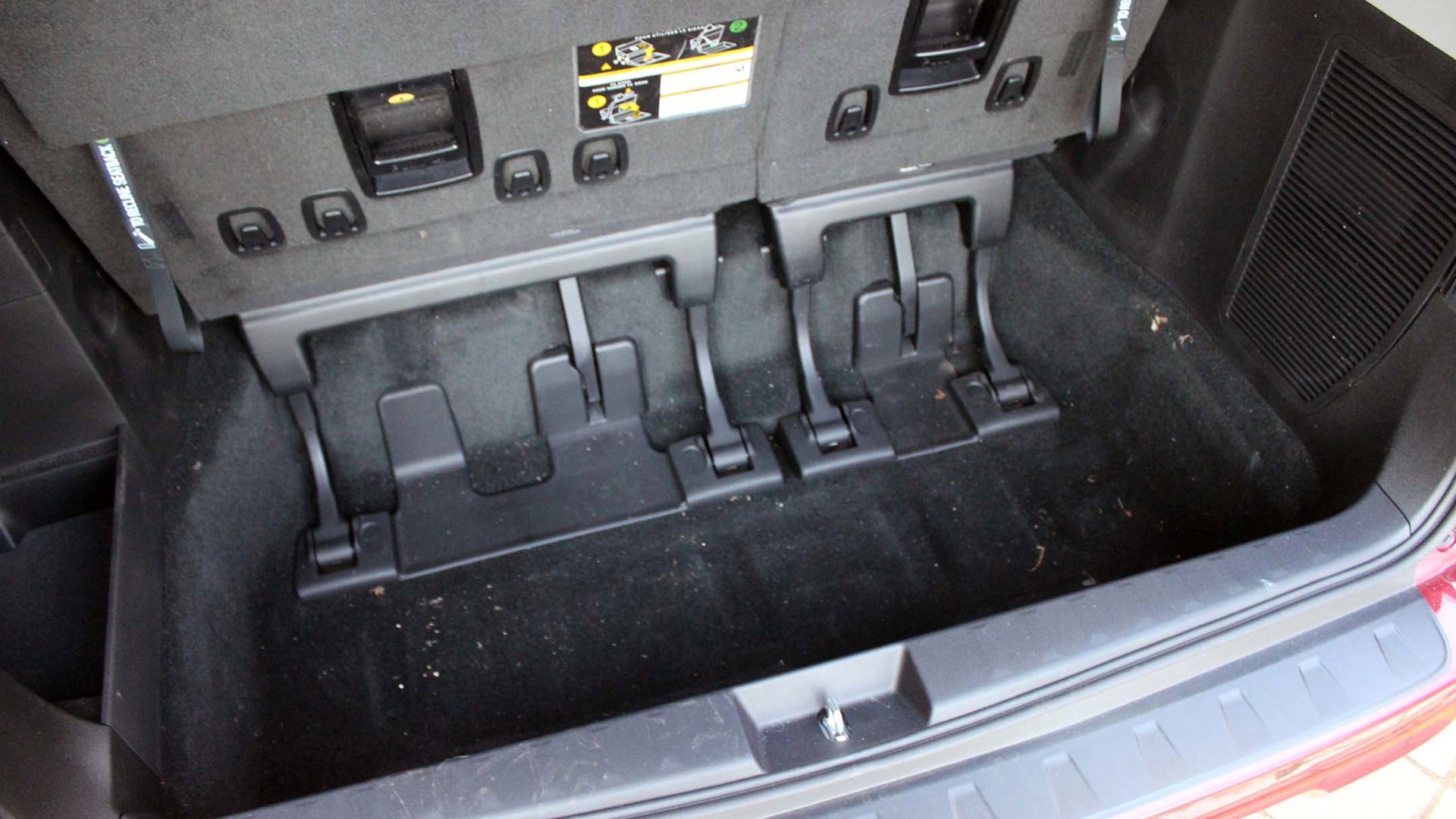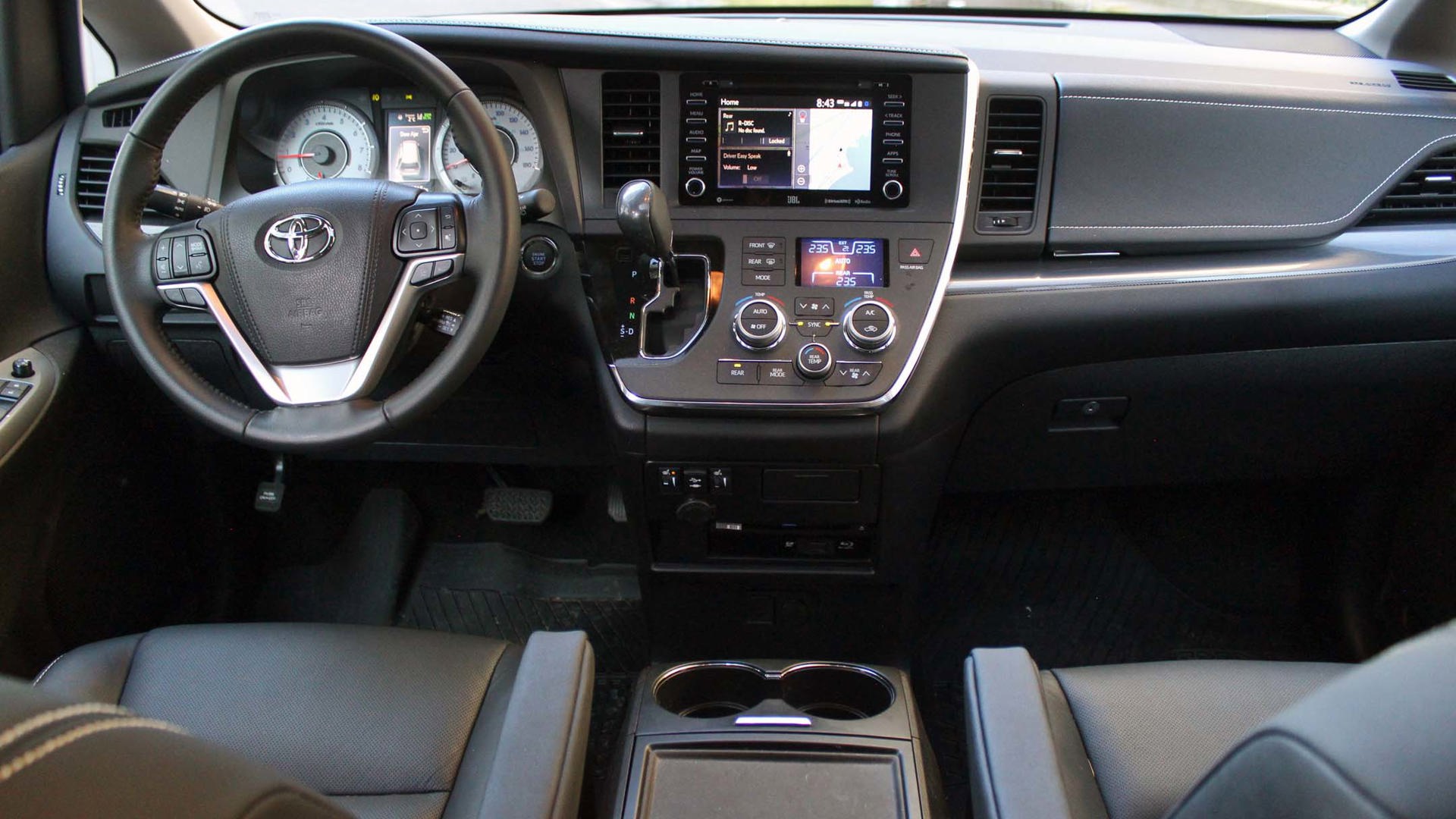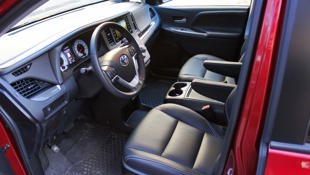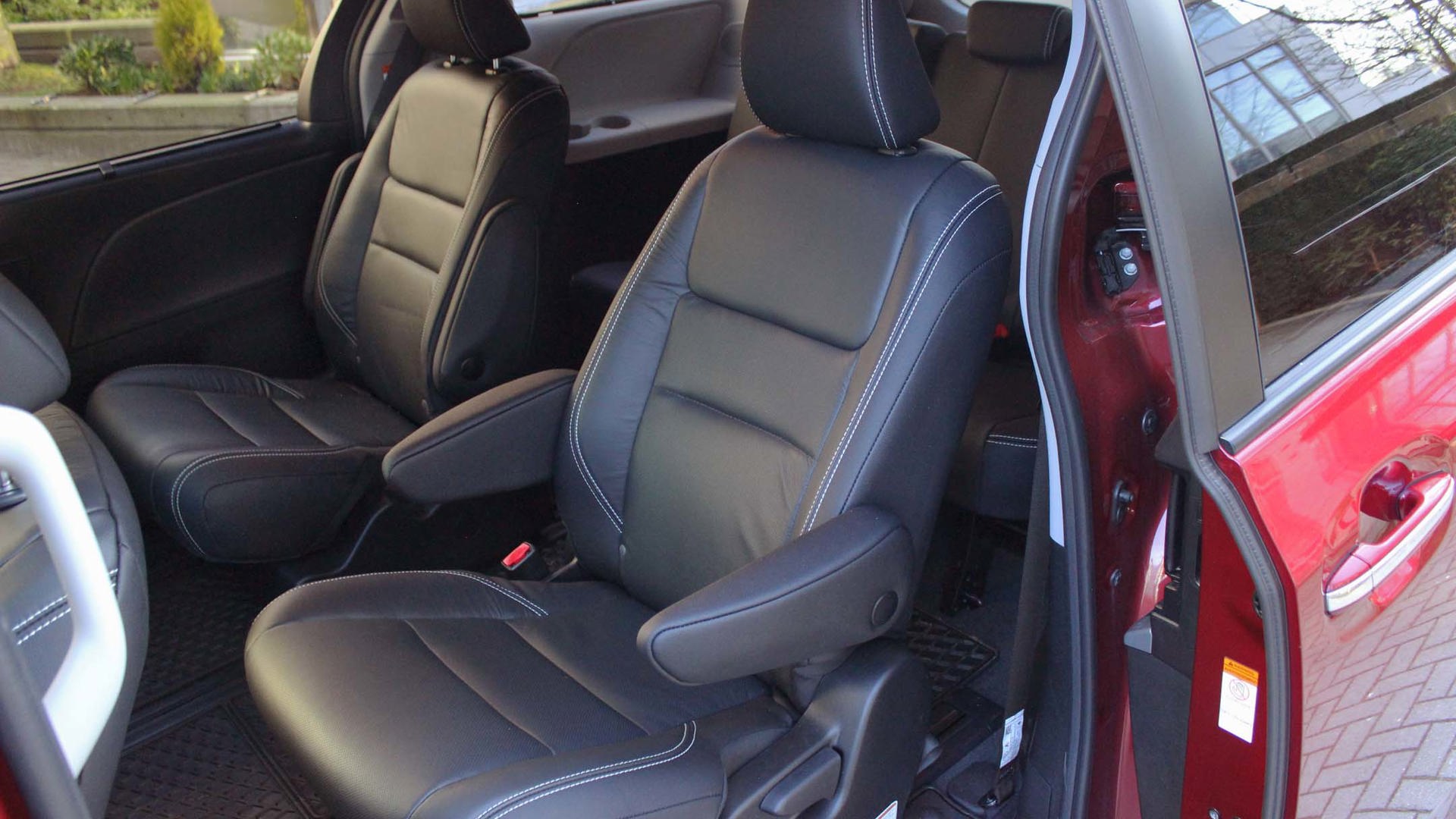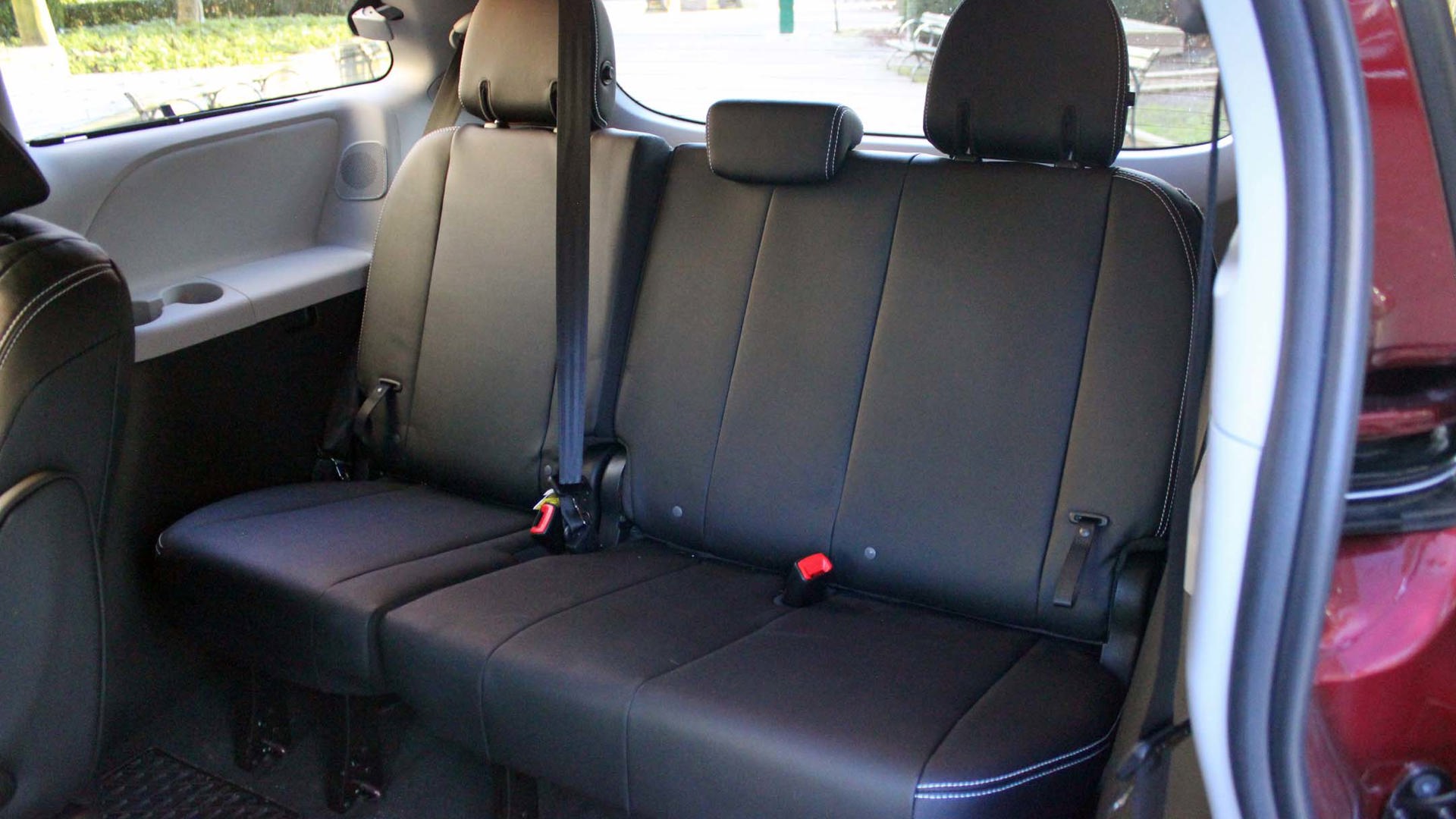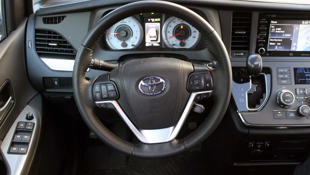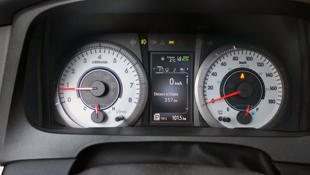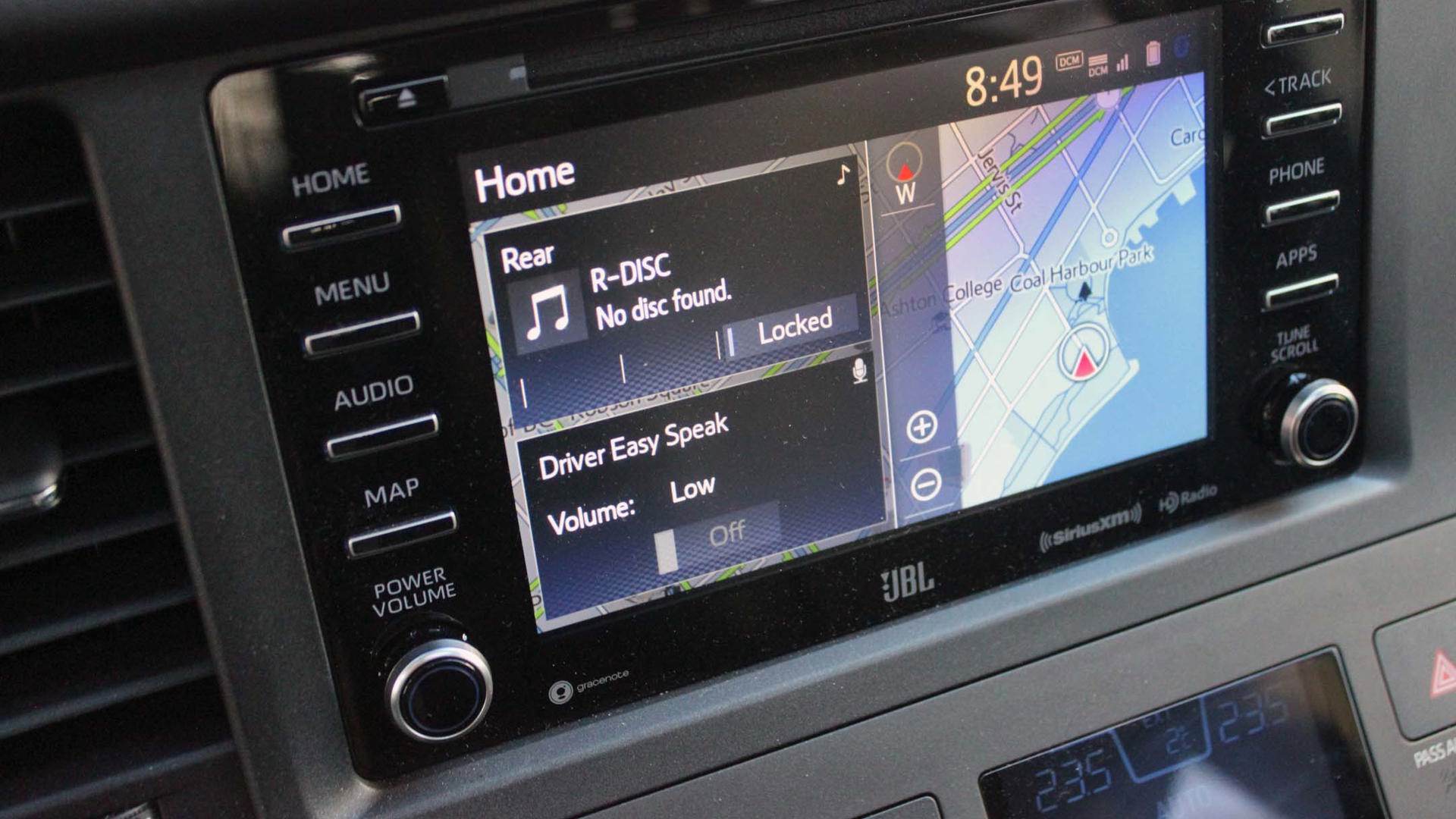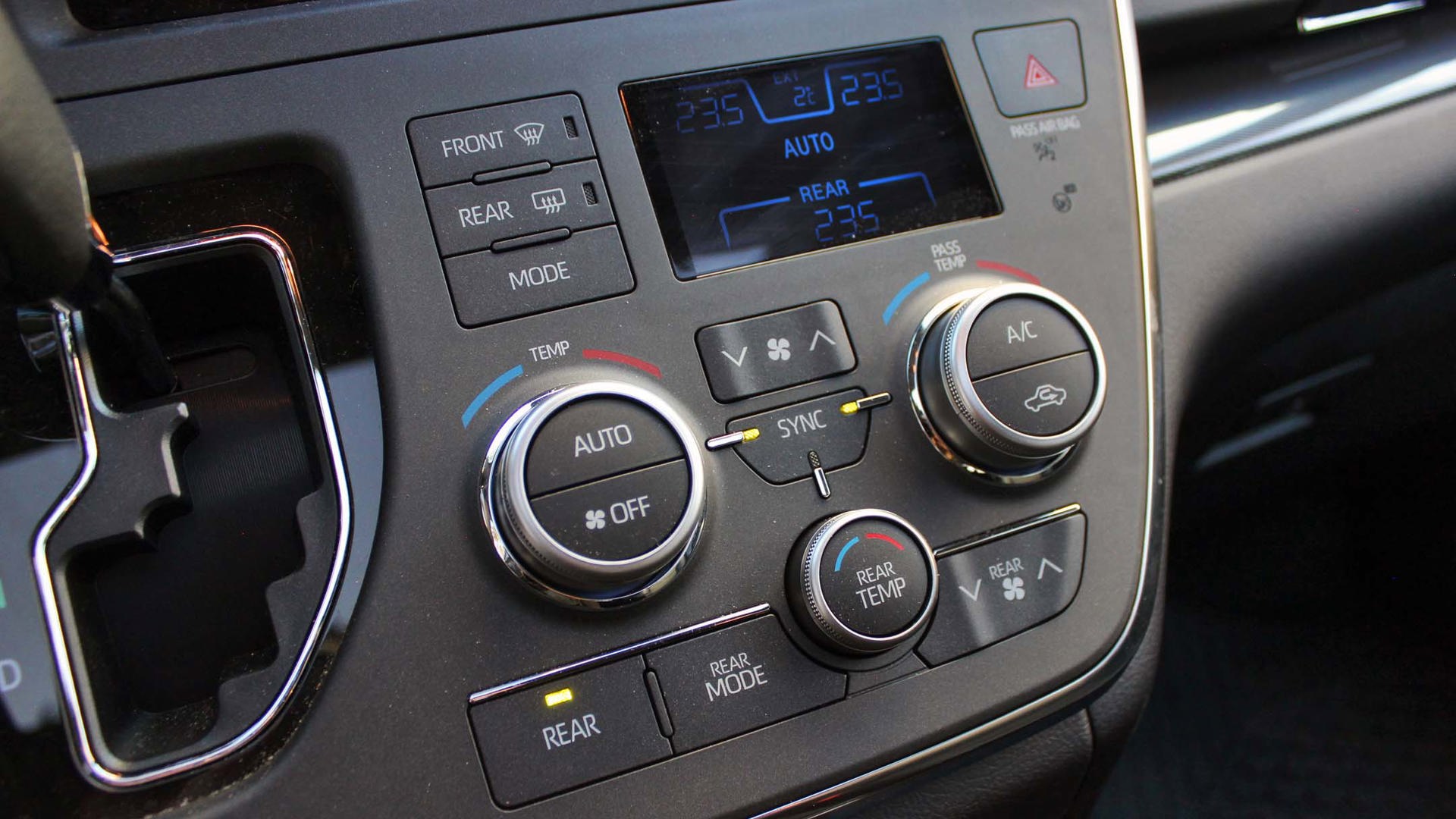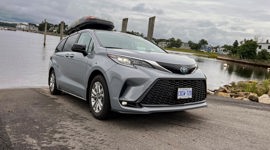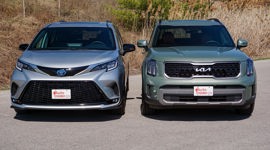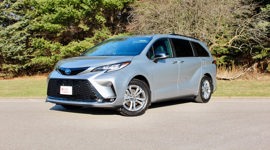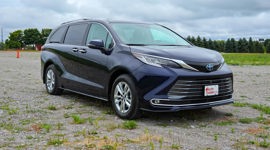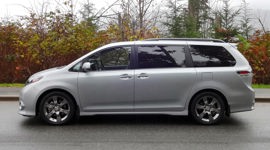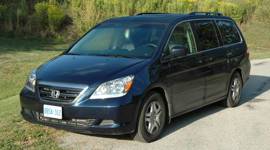 AutoTrader SCORE
AutoTrader SCORE
-
STYLING6/10
-
Safety7/10
-
PRACTICALITY9/10
-
USER-FRIENDLINESS8/10
-
FEATURES7/10
-
POWER7/10
-
COMFORT10/10
-
DRIVING FEEL7/10
-
FUEL ECONOMY6/10
-
VALUE8/10
Even before the onslaught of three-row SUVs and CUVs, minivans have had it tough. I know that as a kid growing up in the ’90s, while they may have been all the rage, they sure as heck weren’t cool; you didn’t see any posters of the Dodge Caravan Sport on any of my buddies’ bedroom walls, that’s for sure. They were practical, and they were owned by mom and dad – that’s about it.
At its core, the Sienna is a good minivan that does the important stuff well.
Thing is, while they continue to lose on the sales front to CUVs and SUVs, there’s has been a bit of a sea change; it’s almost like since there are so few of them these days – only five models are sold in Canada – they’ve become almost like a cult-ish oddity, with very good stuff like the Chrysler Pacifica the beneficiaries of this cockeyed interest.
Of course, the vehicle you see here isn’t the Pacifica; the Toyota Sienna is one of the stalwarts of the minivan game, along with the Honda Odyssey and Dodge Caravan. It’s been here since it took over from the jelly-bean-shaped (but mid-engined!) Previa back in 1997. Now in its third generation, the 2019 Toyota Sienna is bigger than ever and has been given a new face to fit in with the rest of Toyota’s lineup, all narrow-headlamps and low-pro grille. Our mid-level SE AWD V6 version, meanwhile, had the $5,815 Technology Package that adds, among other things, rear entertainment, Toyota Entune 3.0 infotainment, and 10-speaker JBL audio.
You may have also caught that “AWD” in the name; I was surprised to see that when I encountered my tester as well, but then remembered that there was a 4WD Previa and it no longer seemed so outlandish. Not to mention it seems pretty much everything is getting the AWD treatment these days, from small hatches to mid-size sedans, sports cars, and beyond. Everything, of course, except for minivans: the Sienna is the only one out there that has that option. A feather in its cap right off the bat, then. Of course, with the Sienna it’s more of a passive system in that it works as FWD unless otherwise required due to slip, but I can imagine that there are more than a few Canadian families that will find solace in it, while Toyota can say at least its minivan is offering something that pretty much every one of those pesky CUVs and SUVs in Canada have.
Also, not that many will, but I wouldn’t go off-roading in the Sienna; you know why there’s so much room to fit stuff between the front seats, and how easy it is to step in? That’s because it’s low to the ground, and doesn’t have its running gear stuffed high in the chassis like an SUV might. Just keep that in mind.
The ability to cruise in FWD mode also helps improve the fuel economy of the 296 hp 3.5L V6, as does the existence of an eight-speed automatic transmission that can actually be set to manual mode. Fun fact: when in manual mode, the current gear is displayed in big block numbers, right there in the gauge cluster. You know, like it would be in a sports car. Pretty good stuff and while the Sienna has some athletic attributes in its styling – gunmetal wheels, roof spoiler, blacked-out honeycomb grille, rocker panels, clear taillights – it’s not an especially athletic vehicle. Indeed, when you’re a minivan weighing in at 2,059 kg, nor are you expected to be.
That weight can mostly be felt, of course, as you’re pushing off; you can dip that throttle a little more if you’d like, but it gets a little loud at that point and you can just feel the fuel being guzzled when you do it; we saw 14.8 L/100 km in mixed driving during our week with the vehicle. Not bad, but with a 75-litre tank you’ll want to keep your eye on the fuel gauge on longer drives over potentially undulating terrain. I can’t believe I’m saying this, but I think it would behoove Toyota to think about a CVT for the next Sienna – with their typically smooth operation, light weight, and fewer moving parts, CVTs are ideally suited for the urban grinds that vans like this are always going to be doing.
Inside, it comes as no surprise that it’s pretty cavernous-feeling. The view out over the very large, very vertical dash is a surprisingly good one. At 1,985 mm, the Sienna is a wide vehicle so a good view out is imperative to being able to accurately place it both in your lane and while parking – the high seating position sure helps. At 5,095 mm, it’s quite long, too, so you’re going to want to be setting those mirrors correctly and keeping an eye on the back-up cam. Which, unfortunately, offers no top-down view so you don’t get that bonus when parking. Basically, sitting in the Sienna feels exactly as you’d expect it to feel, considering its minivan digs. While there, meanwhile, you can keep an eye on your flock with the convex mirror mounted to the sunglass holder crowning the windscreen.
Considering those minivan digs, meanwhile, the rear-seat access and comfort is paramount. To that end, we had the seven-passenger version meaning a pass-through walkway between the second-row captain’s chairs to the third-row bench. I grew up always having a bench seat in the second row and this is a nice departure from that, making it easy to get back there even for adults. Once back there, the seats may look a little low-profile and three-row-SUV-ish, but they’re fine comfort-wise and adults that found themselves back there had little to complain about. They also get their own cupholders and storage bins, while second-row occupants can adjust the climate temp, if they can reach the panel situated above the door.
The reason they look a little on the thin side is because they need to fold tightly into the floor below, in an example of Toyota’s take on Chrysler’s much-ballyhooed Stow-N-Go seat-folding tech. The seats tumble smoothly into the floor with a yank of a handle mounted in the seatback, which is fine. The handle is a bit of a reach, however, and the seats are heavy so I fear smaller operators may see a bit of a challenge there. One thing that affects all occupants regardless of size, meanwhile, is the way the seats rattle once stowed. Road dips and speed bumps will have the seats bouncing up and down, and it would be nice if they were more securely fastened down. Other interior niggles include a loose-fitting gearknob (Really? Yes, really, on a sub-2,000 km car) and cupholders – both ahead of the centre console and behind it – that are a little large, having my average-sized Starbucks travel mug rattling around. Should be fine for a Super Big Gulp from 7-Eleven, though – Homer Simpson would be proud. He would probably also like the massive, tacky surface between the front seats, perfect for a dozen-box of donuts. Or a phone.
While the power-sliding doors have their advantages – less time waiting in the cold, can be opened if your hands are full of family and shopping bags – I was shocked to find that they couldn’t detect that my wife was blocking them when I accidentally started to close them with the keyfob; it just kept going, forcing her to duck out of the way mid-baby-installation, and forcing me to feel a bit of an idiot. That’s a bit strange and I found myself wishing on more than one occasion that they were of the old-school, elbow-grease-required variety. To me, the bigger add would be a foot-activated tailgate, which the Sienna doesn’t have.
Infotainment-wise, while the Entune tech is easy enough to use – it’s a touch affair – it doesn’t look spectacular, what with somewhat older fonts and a bland colour palette. No big deal, perhaps, but so much stock is being placed on tech like this these days, my guess is buyers are starting to want more in this regard.
According to the spec sheet, my tester’s having Entune 3.0 means Apple CarPlay is included (that’s new for 2019), but I wouldn’t have known it had I not done extra research by visiting the local Toyota dealer. Usually, all you have to do in systems like this is plug your USB cable into the dash, connect your phone, and you’re good to go. Not here, though. Try as I might – with three phones and two cables – I couldn’t get it to start. After a few button presses with the tech at the dealer, we eventually got a “please connect a compatible device, or turn on Apple CarPlay” message. Except my device(s) were compatible, and CarPlay was on – or so I thought. Turns out, I had to first turn CarPlay on in the Entune settings menu, a move that seemingly can only be done if you don’t have anything in any if the USB slots – and that includes a cable with nothing on the other end. If the USBs are empty, you can then turn on CarPlay, plug-in, and you’re off; the menu option to turn CarPlay on/off isn't even there if you have a USB cable dangling from the slot. I’ve never seen anything like that before, and it had my mind in a pretzel. Oh, and what about Android Auto? Well, there is none. Kudos to Toyota for adding the tech, but the implementation needs work.
Also included as part of that tech package is a blind-spot system and rear cross-traffic alert, which joins standard adaptive cruise, active lane-keep assist, auto high-beam, and pre-collision system. The sensitivity of the LKAS system can be adjusted, but I tended to keep it on the lower setting as a bendy road that I’ve driven hundreds of times kept giving it a tizzy. In fact, it got to the point where I eventually turned it off. I left it on during longer, straighter highway drives, though, as that tends to be a better use of the tech.
At the end of the day, at its core, the Sienna is a good minivan that does the important stuff well – people and wares fit comfortably inside, the ride is comfortable, there’s AWD, and the power afforded by the V6 should be all most families need. It’s in the details where the Sienna starts to pale in the face of competition, which stands to reason as the Sienna is the oldest vehicle among that group this side of the Dodge Caravan. When we see the next-gen vehicle, we can expect a whole different ball of wax as it will likely ride on Toyota’s new TNGA platform, and probably get all the Apple CarPlay and Android Auto tech you can handle.
| Engine Displacement | 3.5L |
|---|---|
| Engine Cylinders | V6 |
| Peak Horsepower | 296 hp |
| Peak Torque | 263 lb-ft |
| Fuel Economy | 13.4/9.6/11.7 L/100 km city/hwy/cmb |
| Cargo Space | 1,107/2,466/ 4,248L |
| Model Tested | 2019 Toyota Sienna SE AWD V6 7-Passenger |
| Base Price | $45,405 |
| A/C Tax | $100 |
| Destination Fee | $1,815 |
| Price as Tested | $53,135 |
|
Optional Equipment
$5,815 – Technology Package (Entune 3.0 premium audio, Entune Safety Connect with automatic collision notification, stolen vehicle locator, emergency assistance button (SOS), and enhanced roadside assistance (3 year subscription), Entune Destination Assist (6 month subscription), embedded navigation replaces Scout GPS Link, map updates – 3 years (maximum of 3 updates), 7” display screen, navigation, dual-screen rear seat Blu-ray entertainment system, 2 sets of wireless headphones, overhead 16.4” widescreen monitor, IP traffic and weather replaces traffic and weather apps, premium JBL audio, 10 speakers, blind spot monitor, rear cross-traffic alert, push-button start, smart key system with power back door button, power moonroof, theft deterrent system) $5,815
|
|
